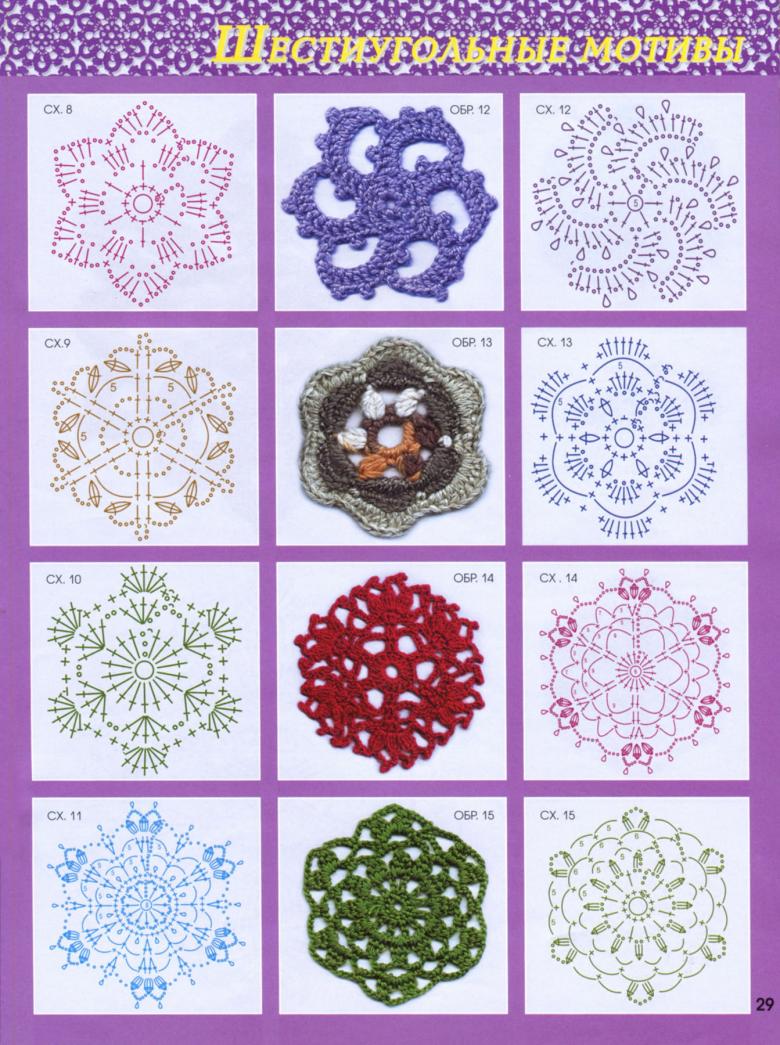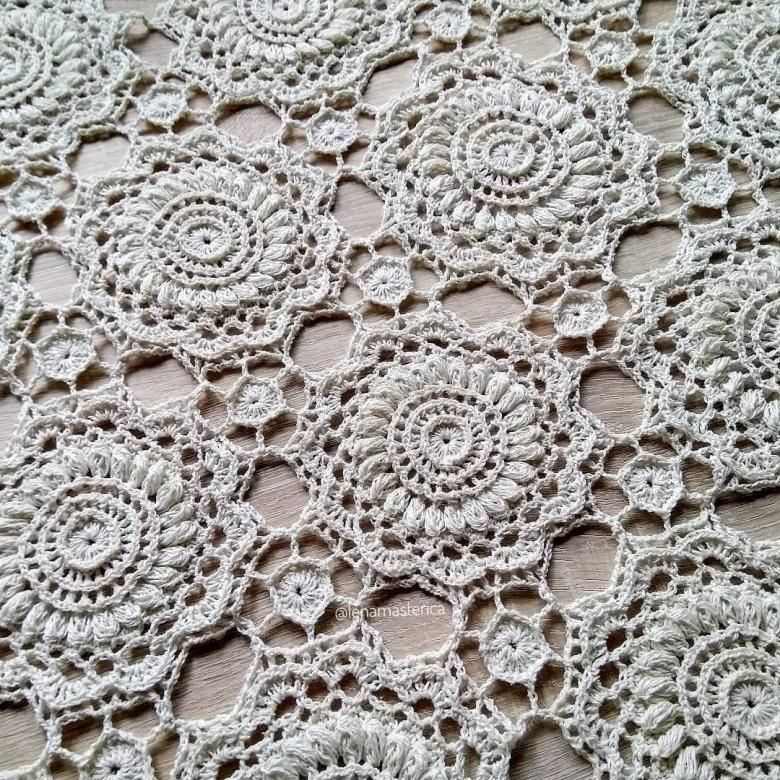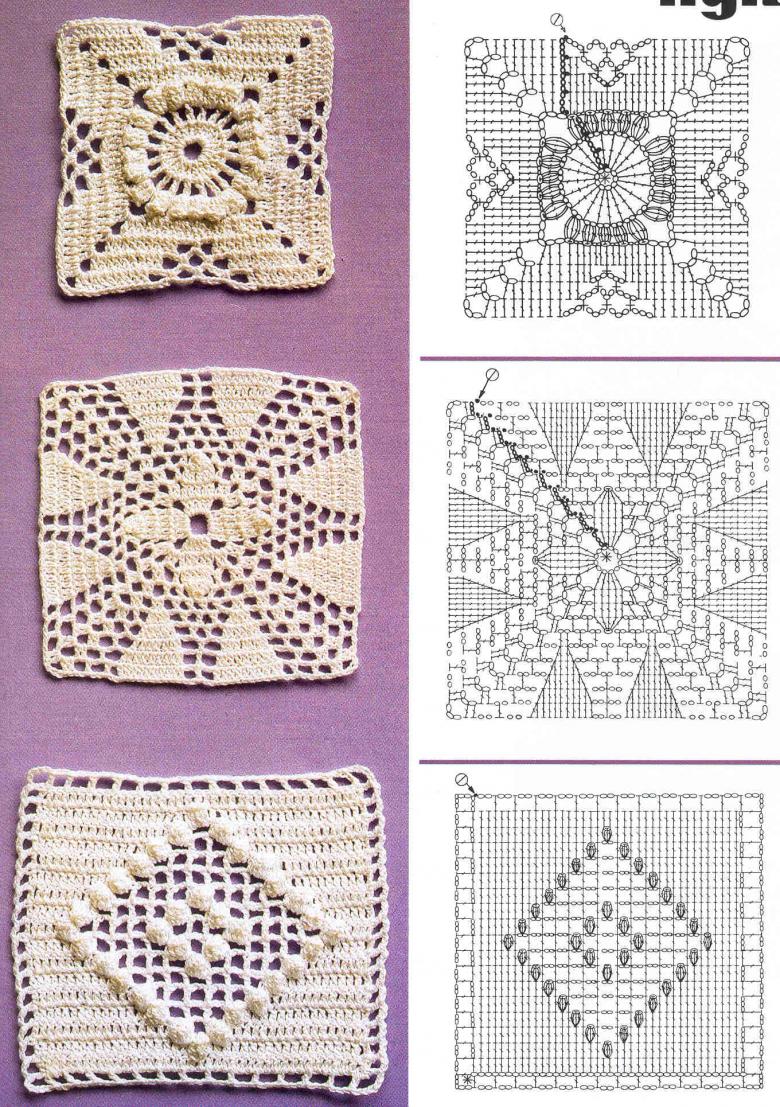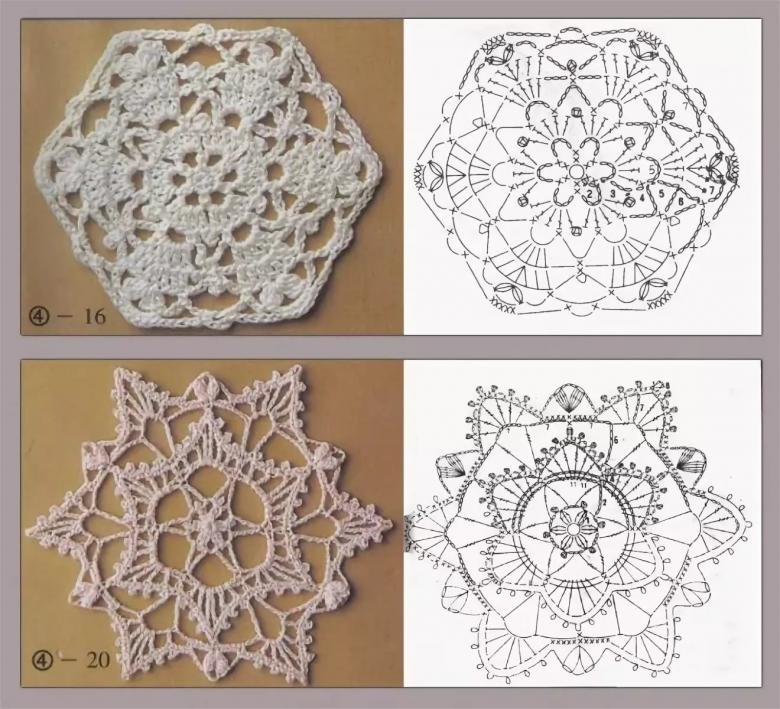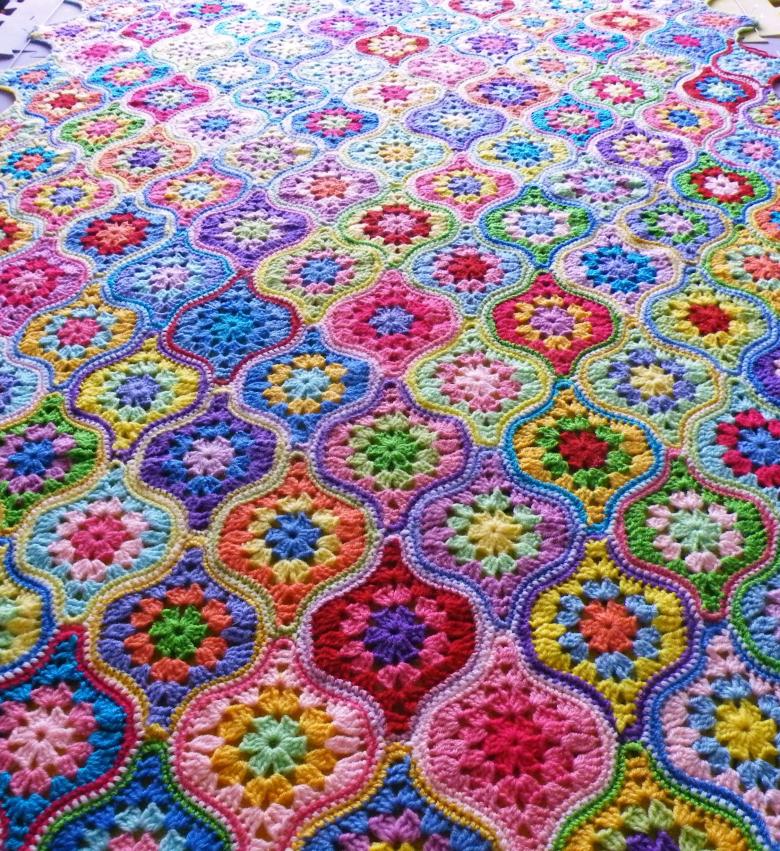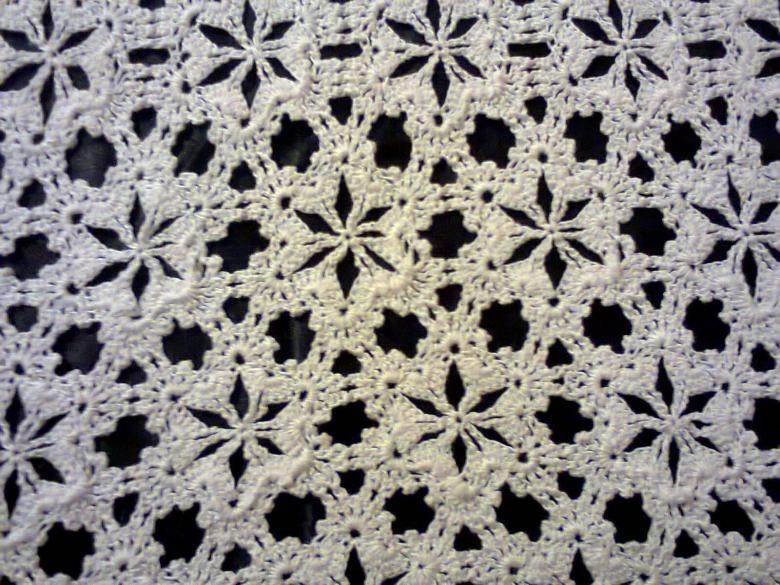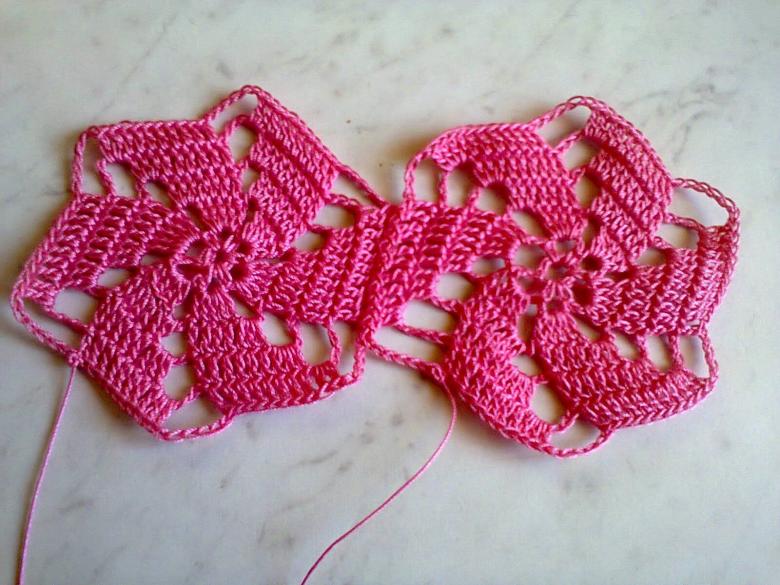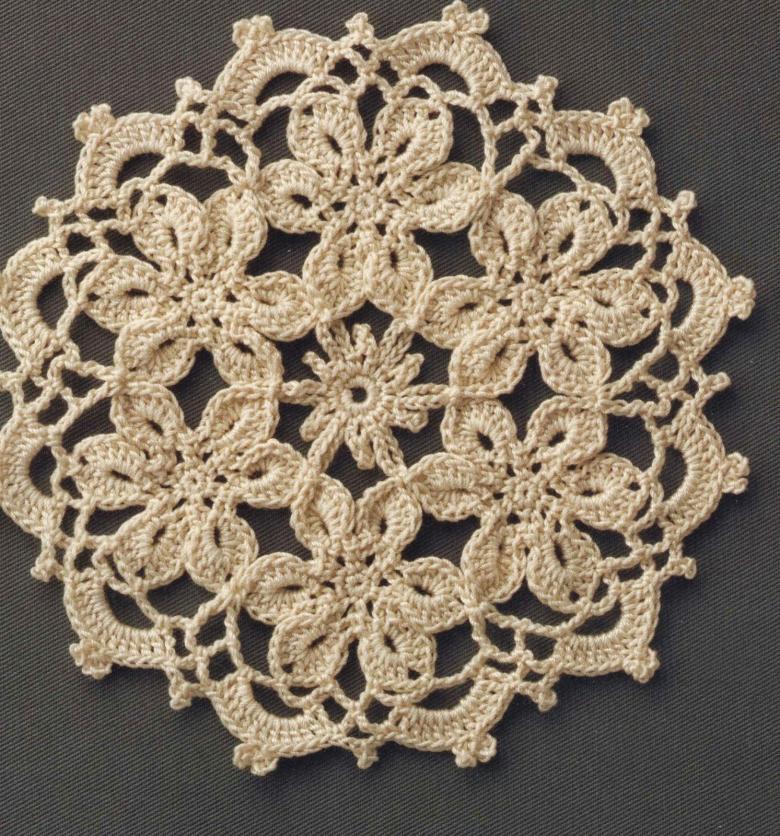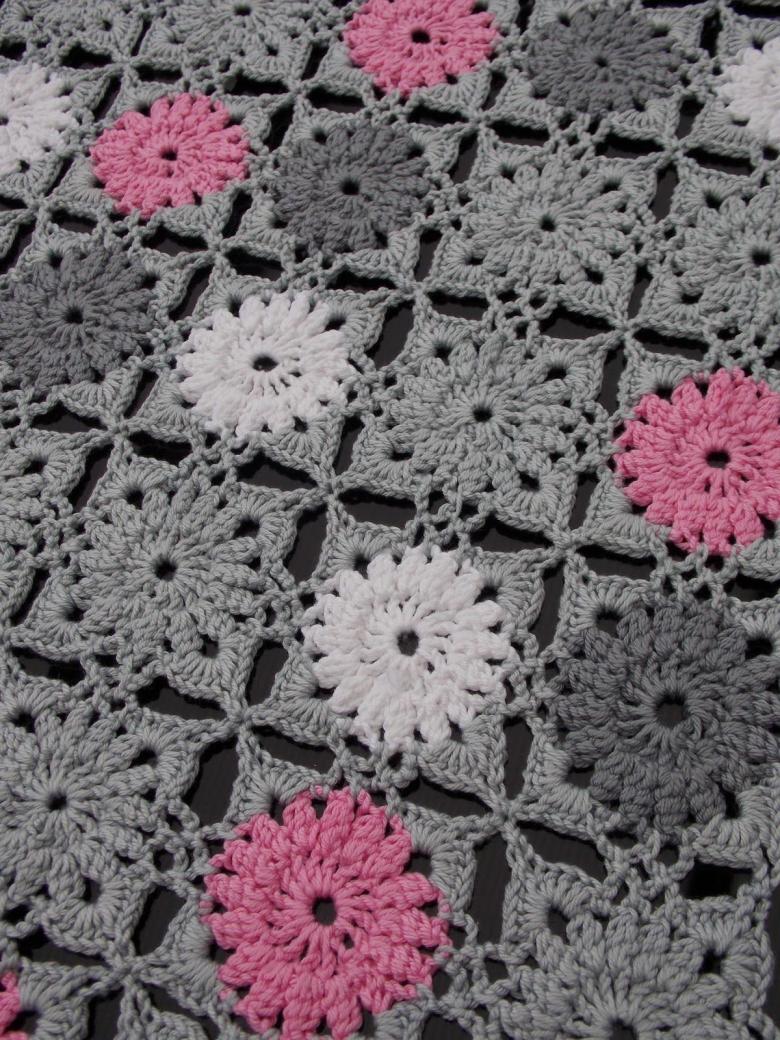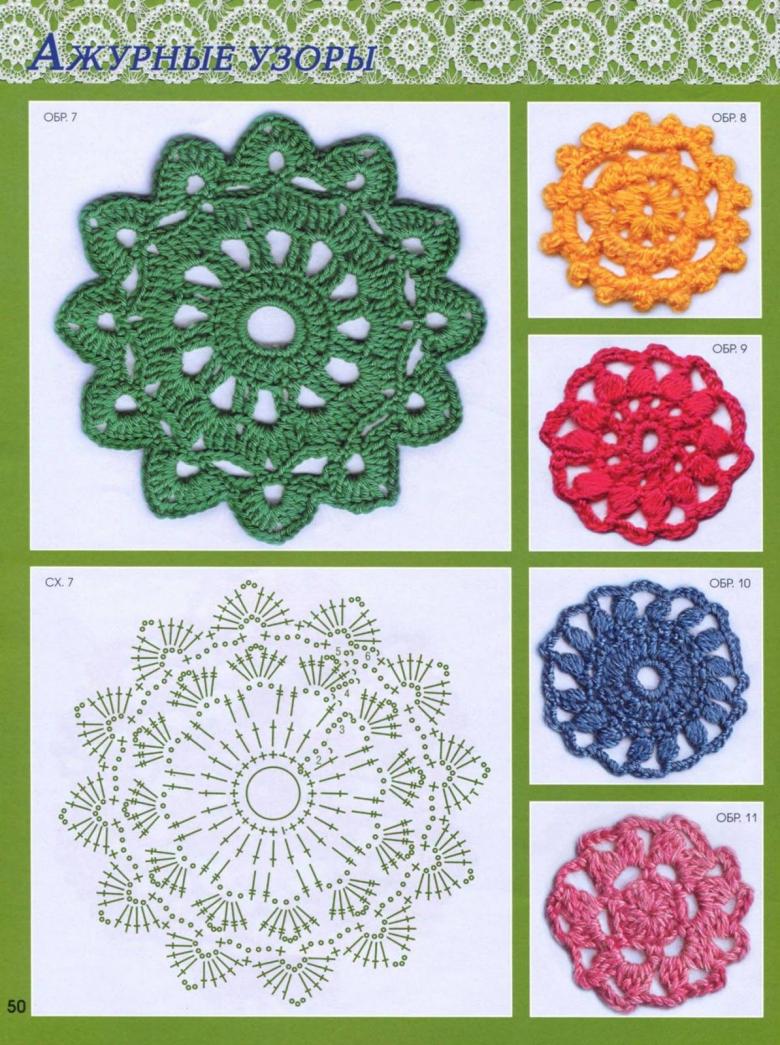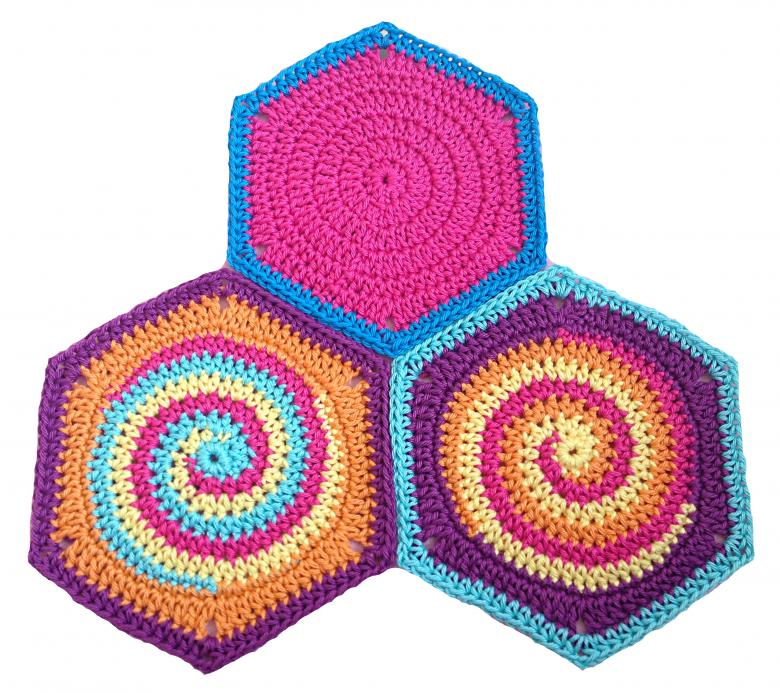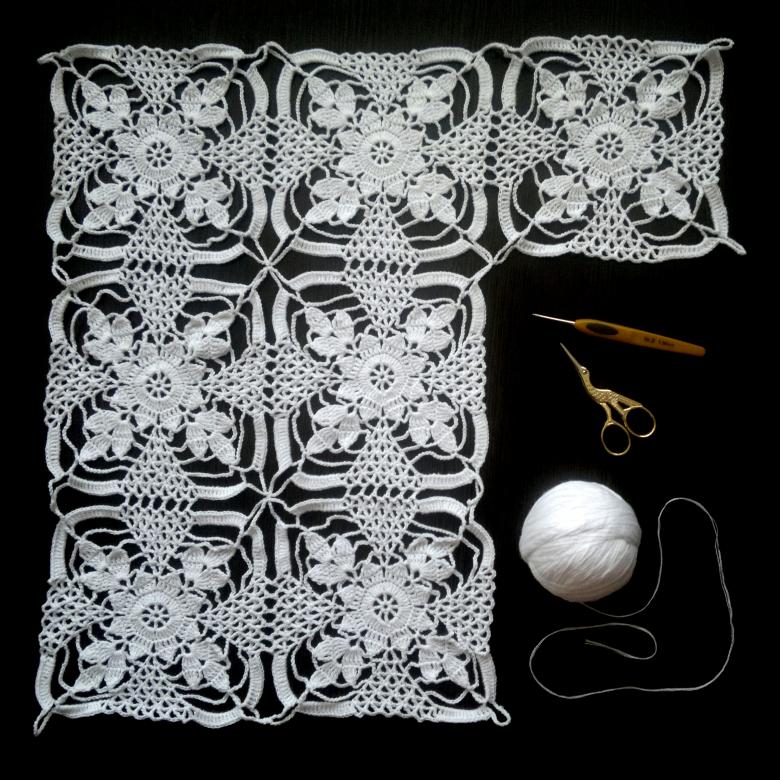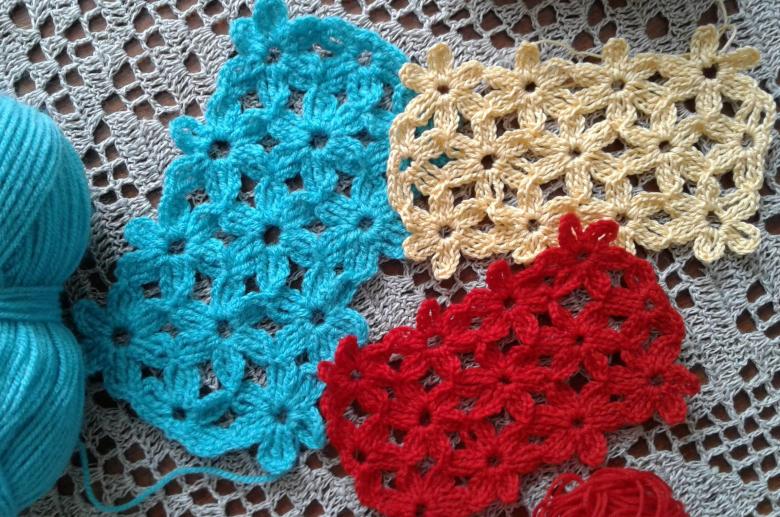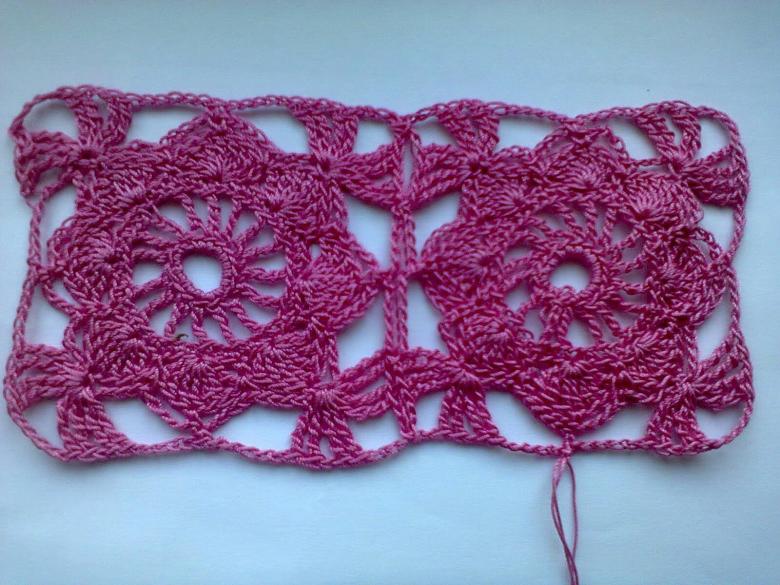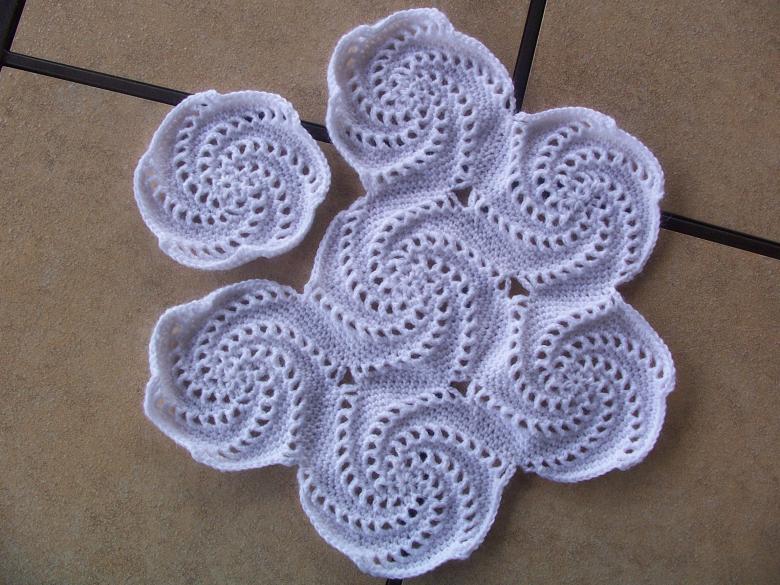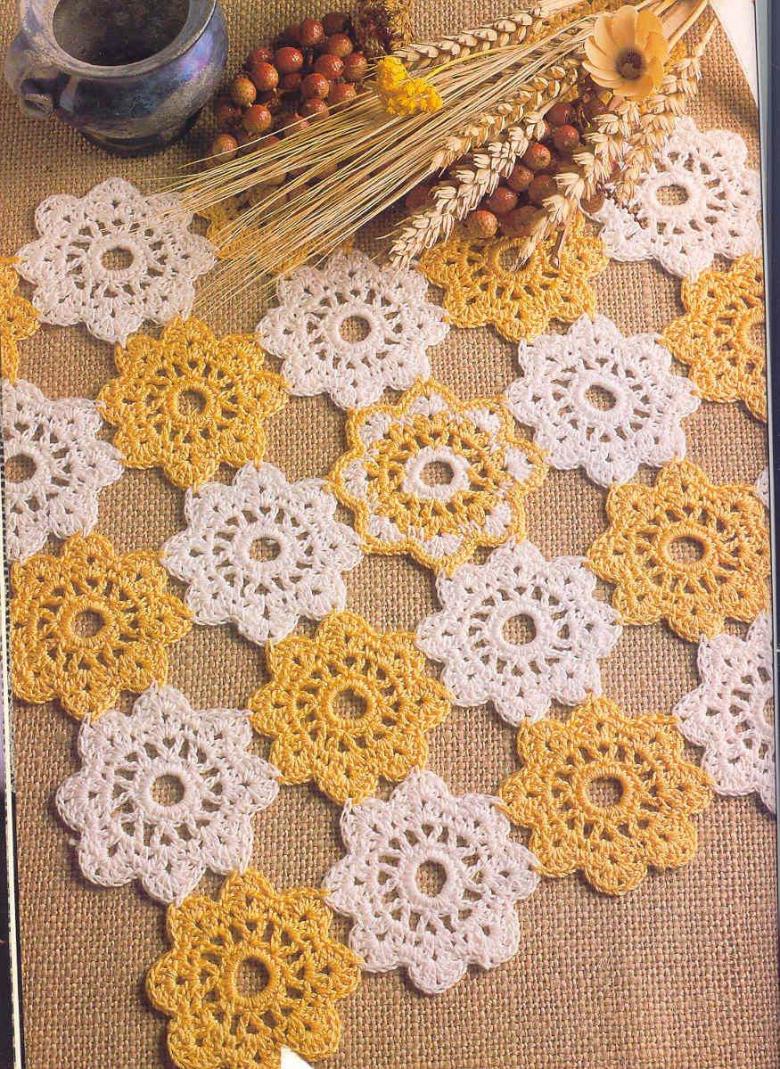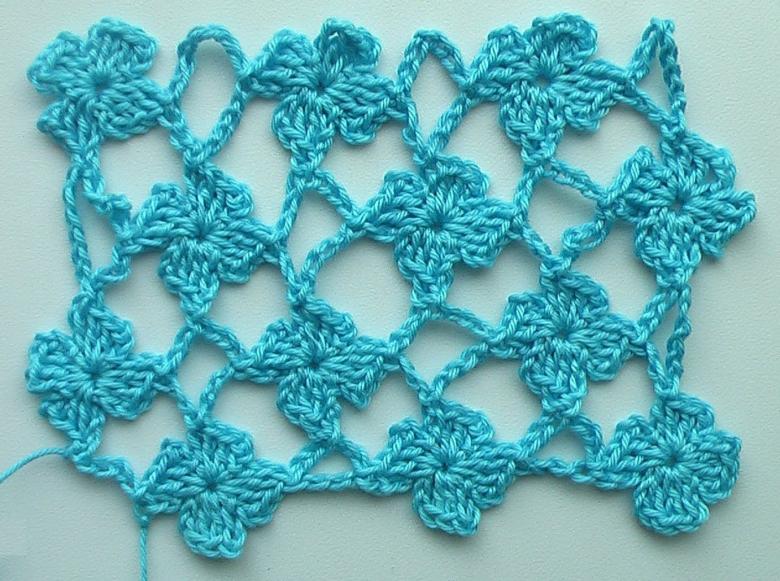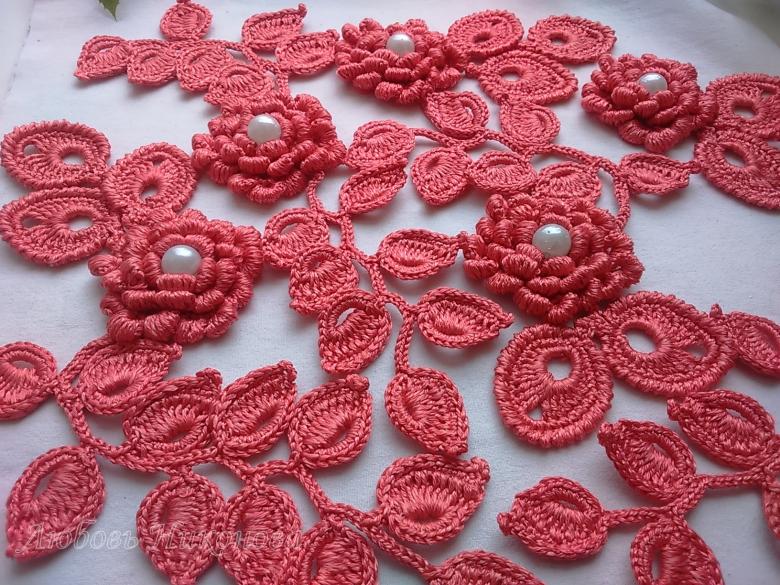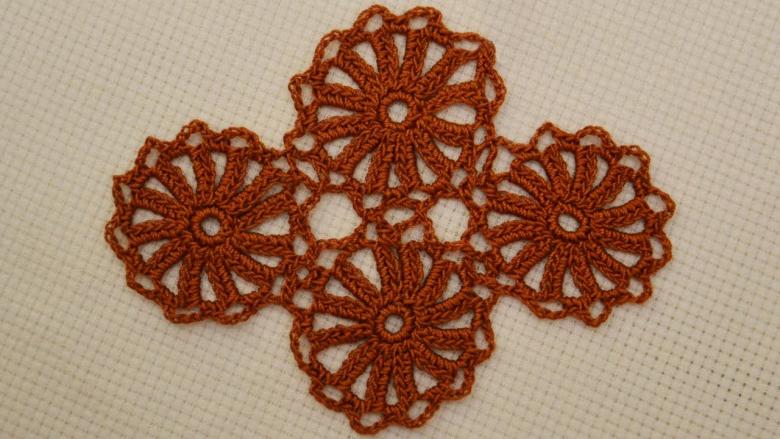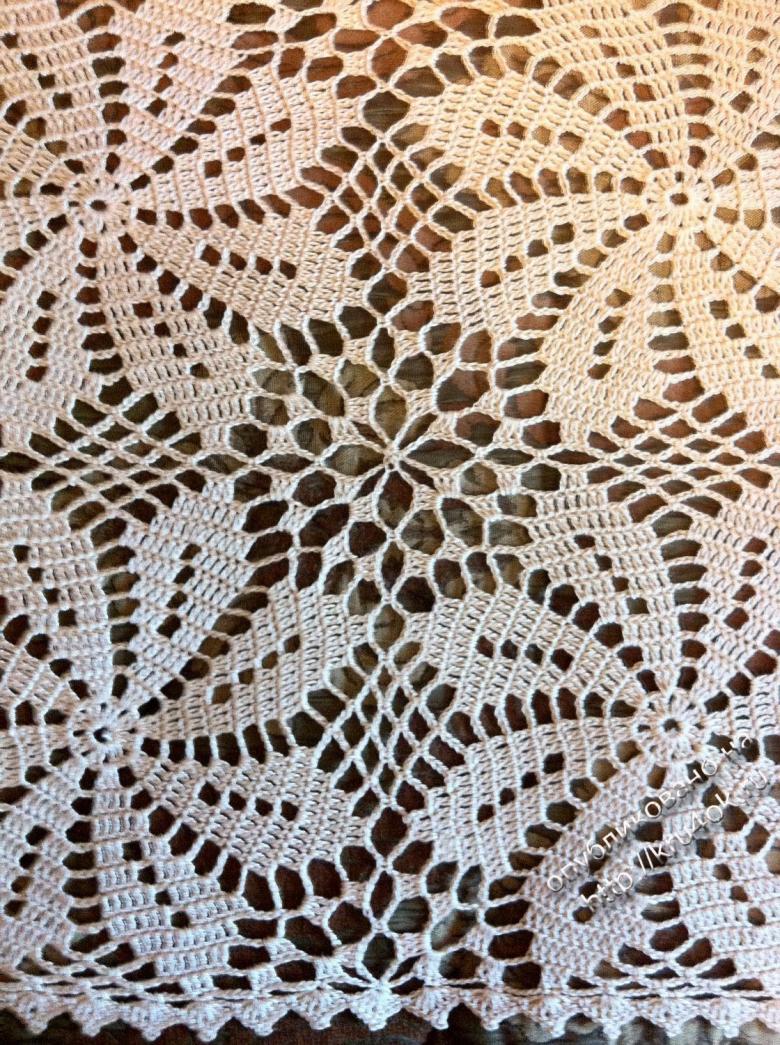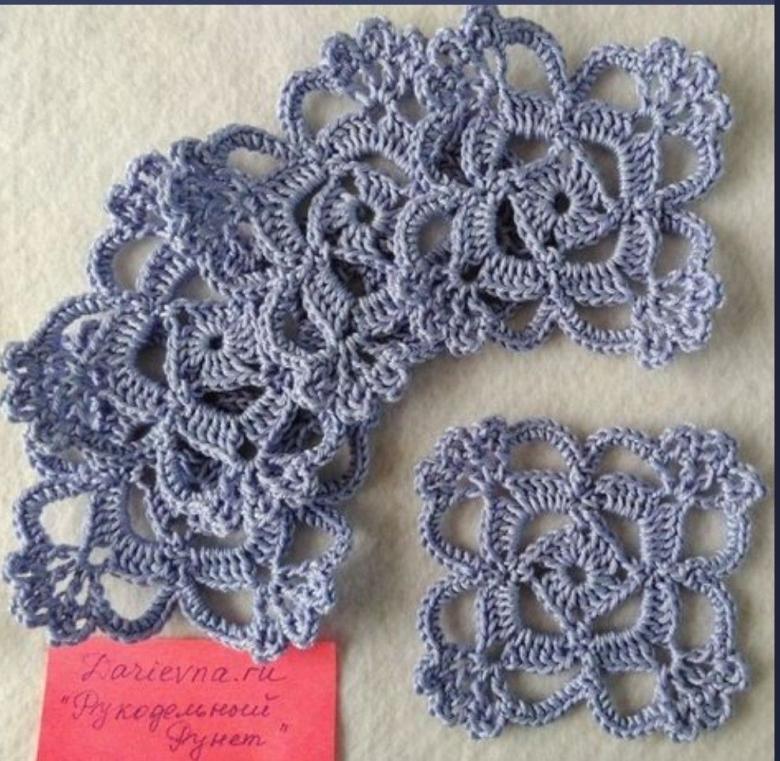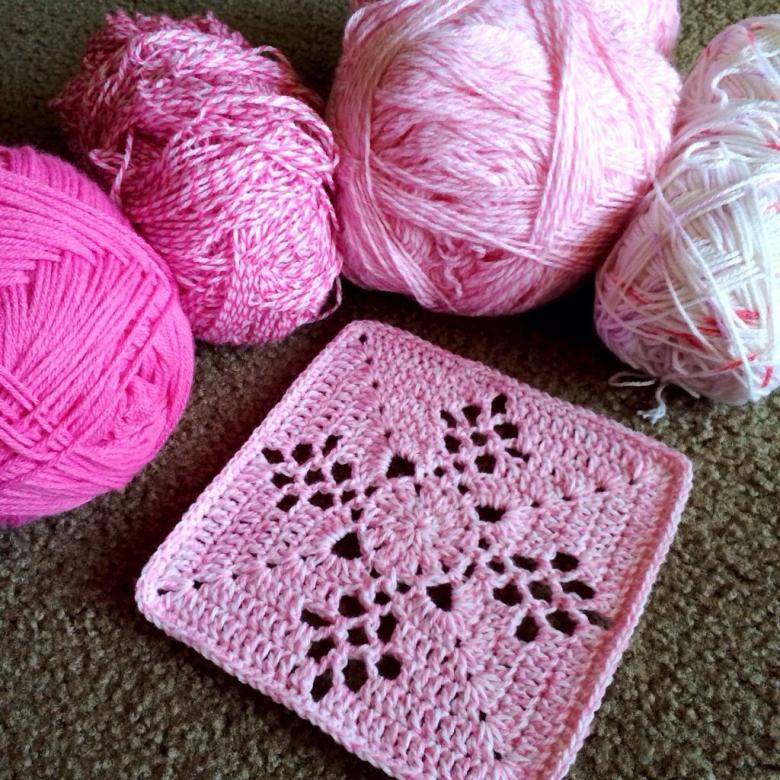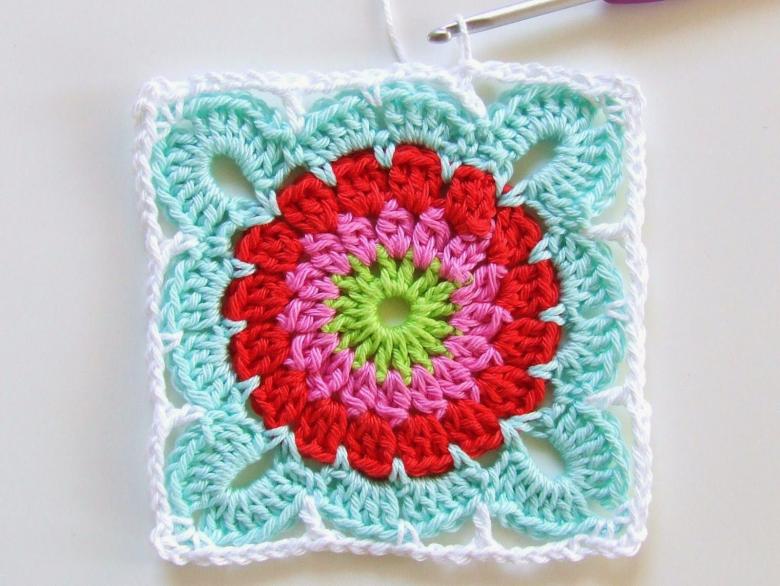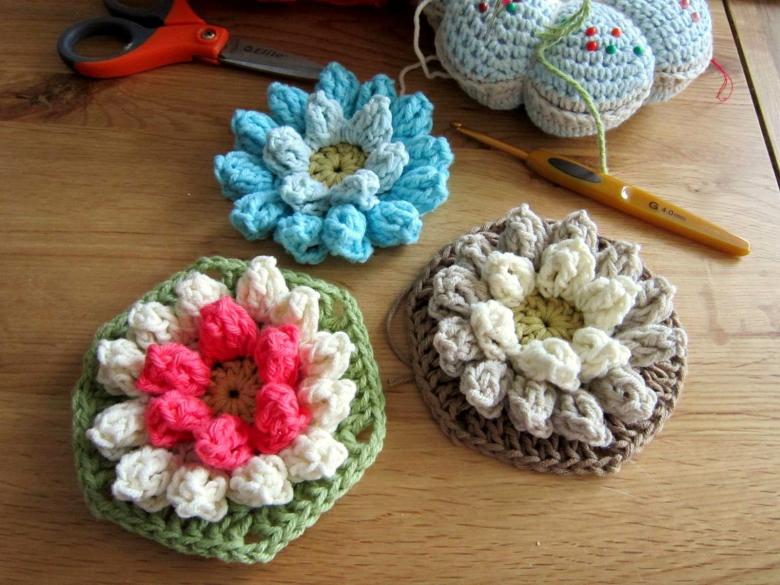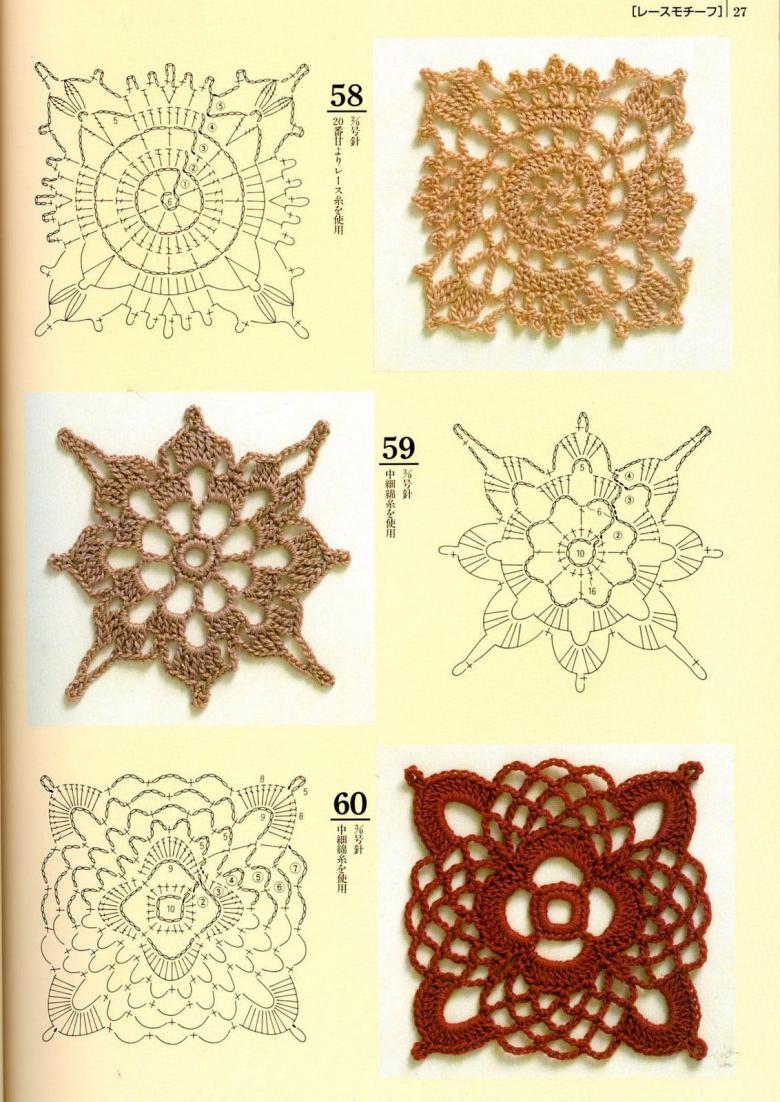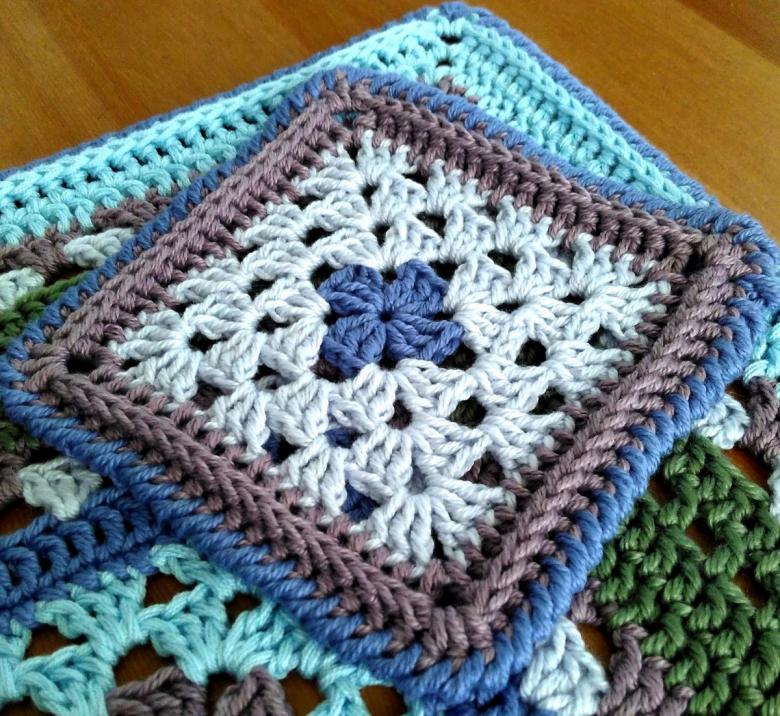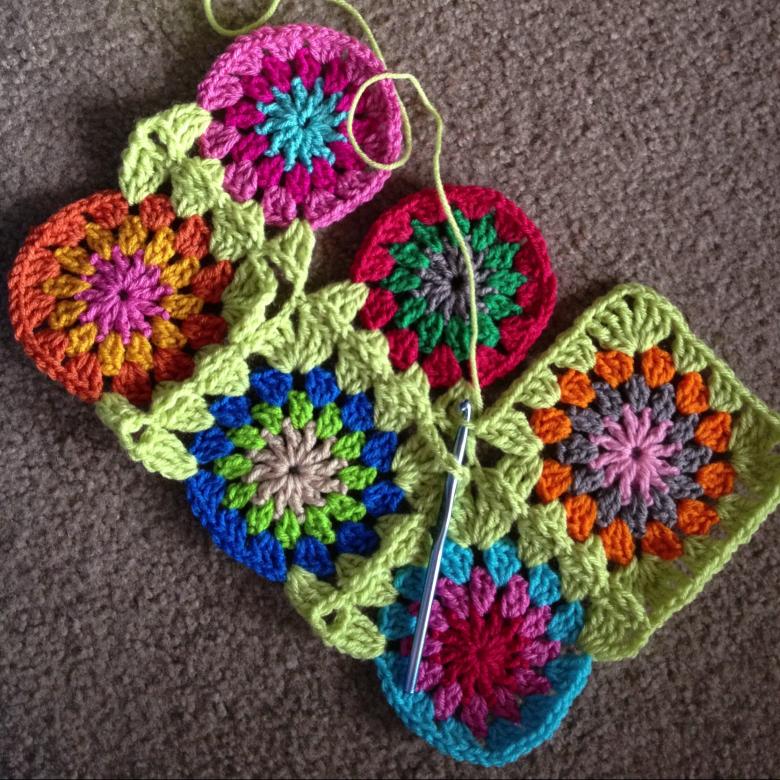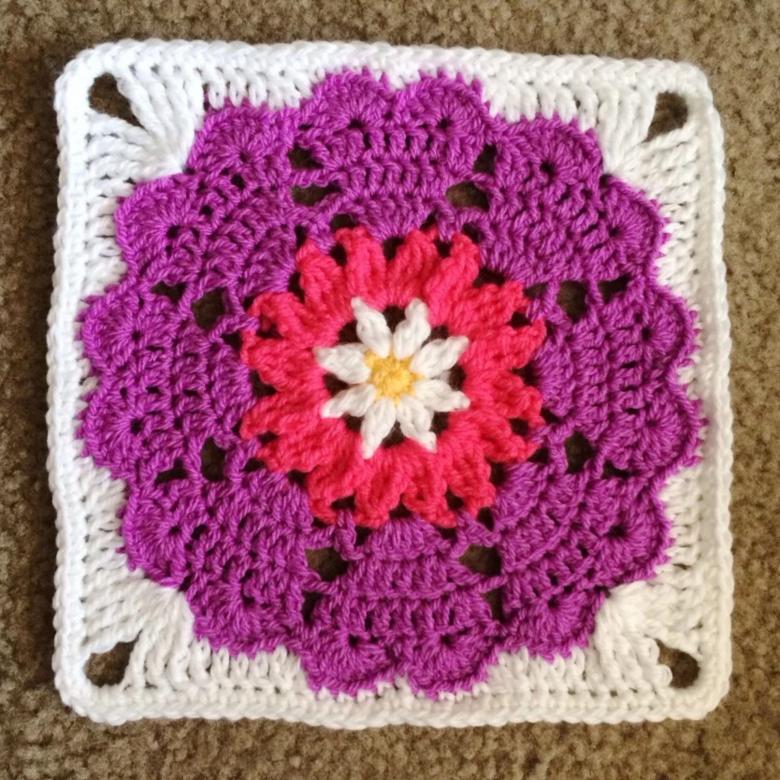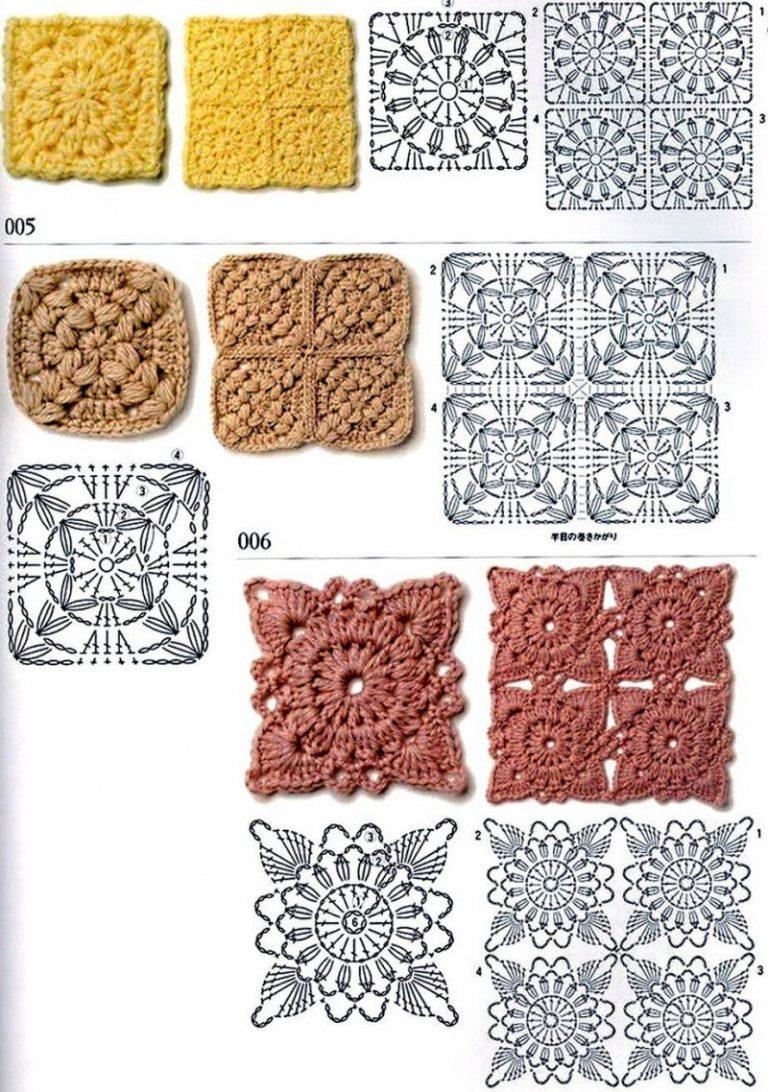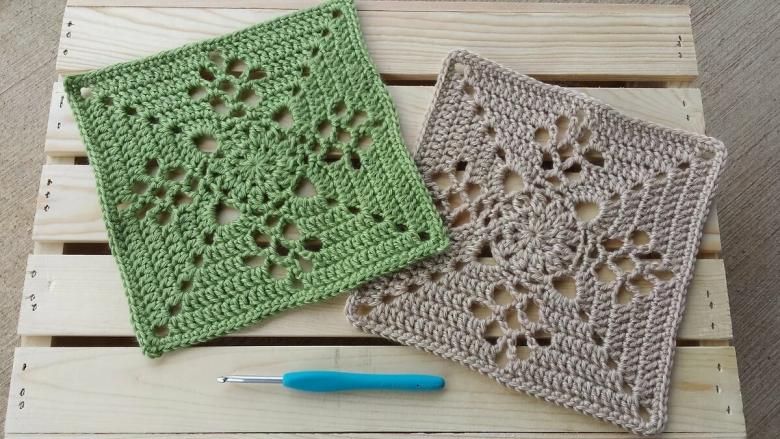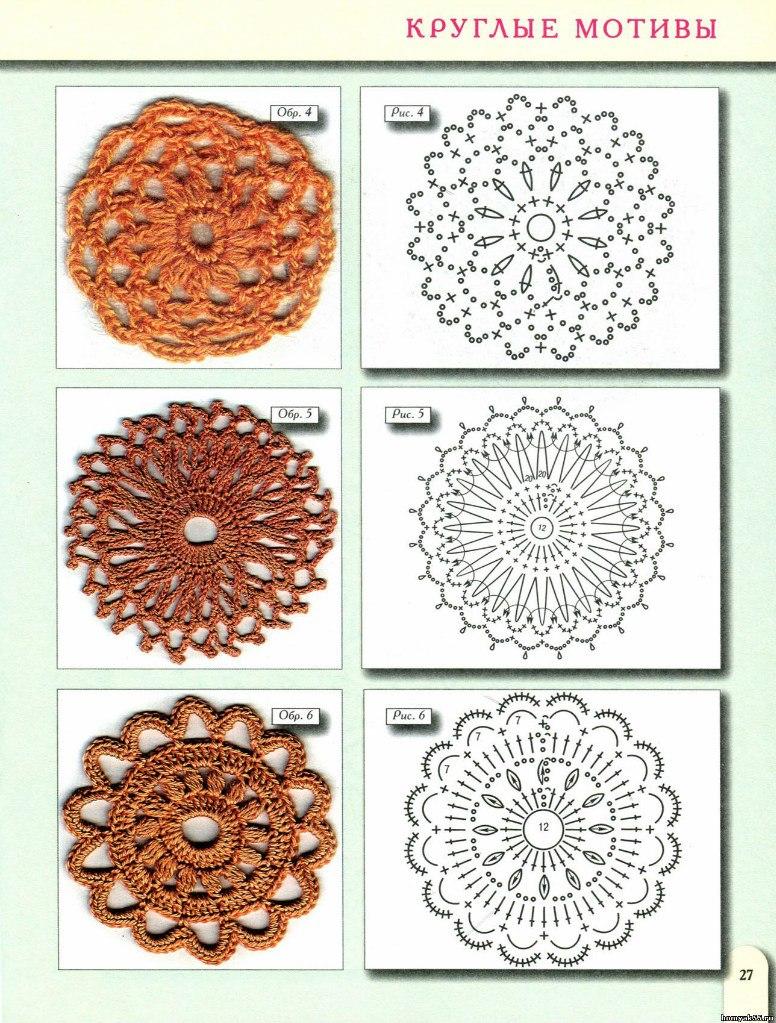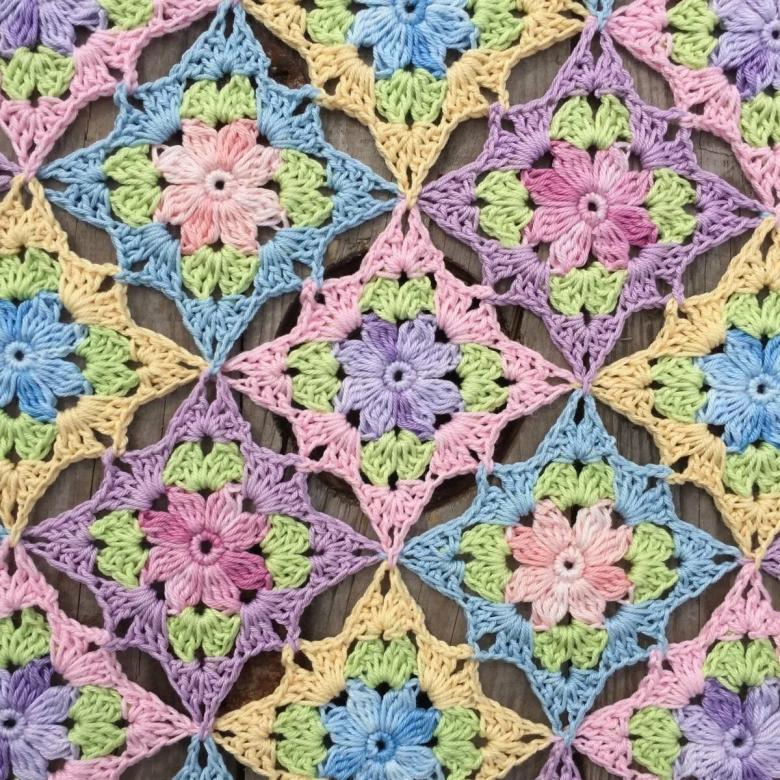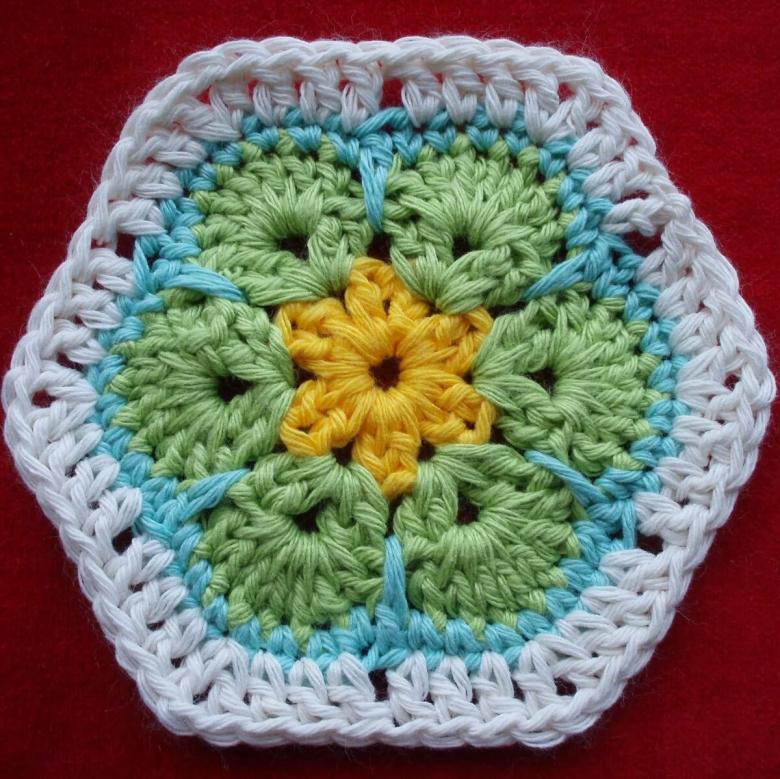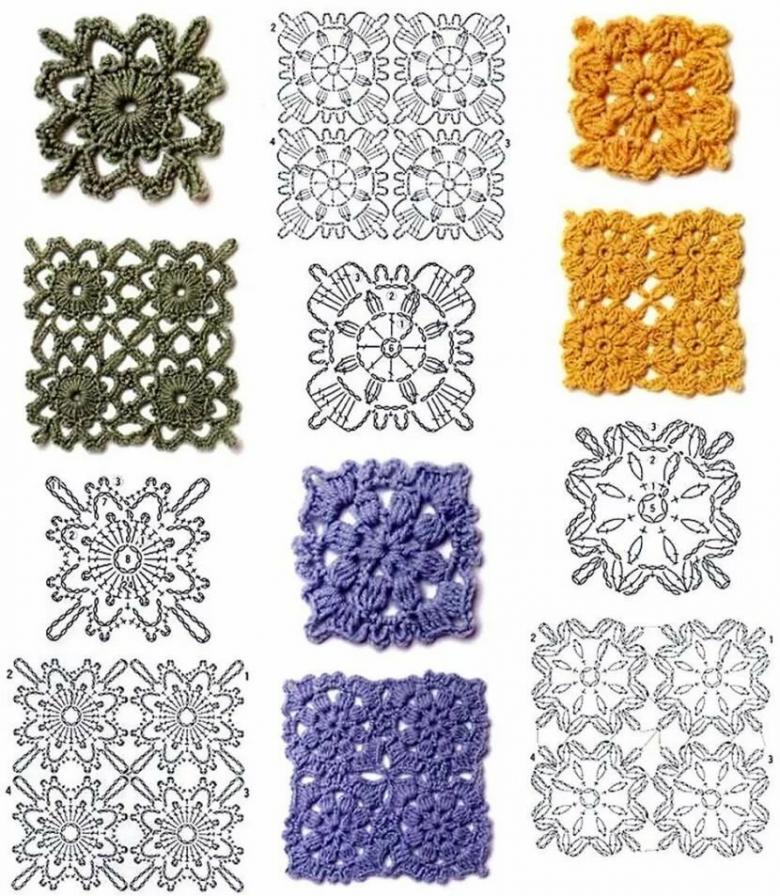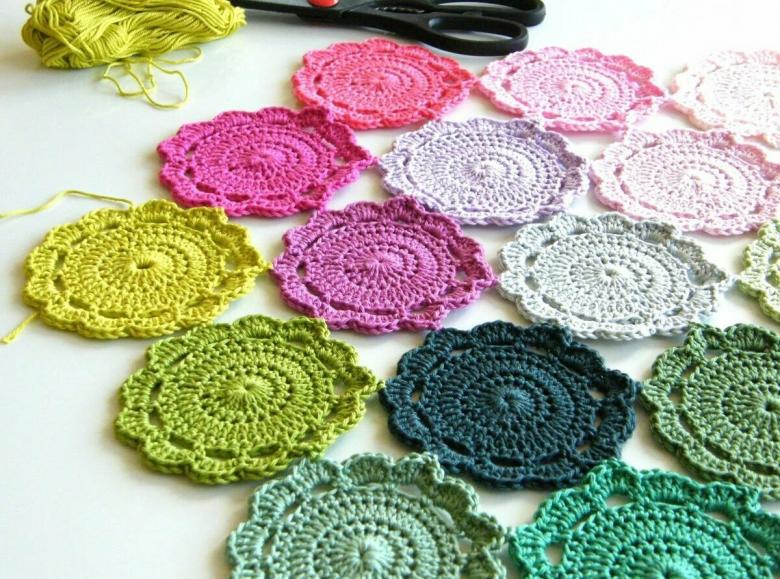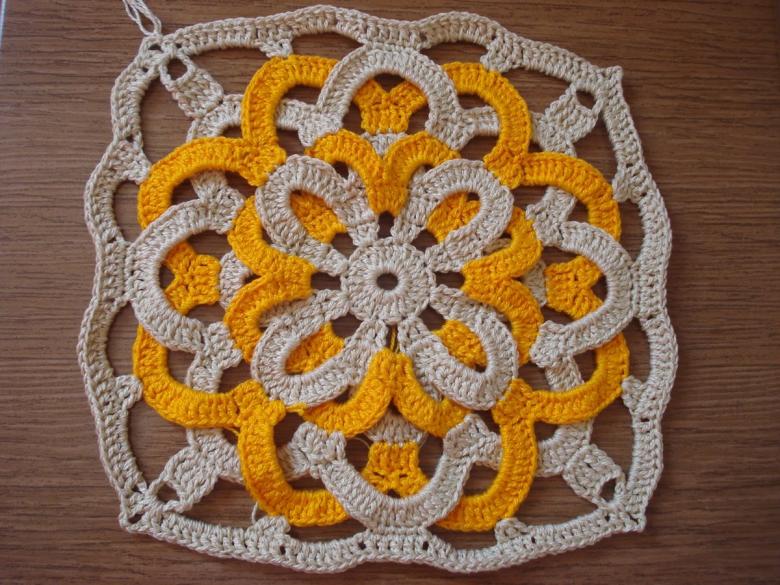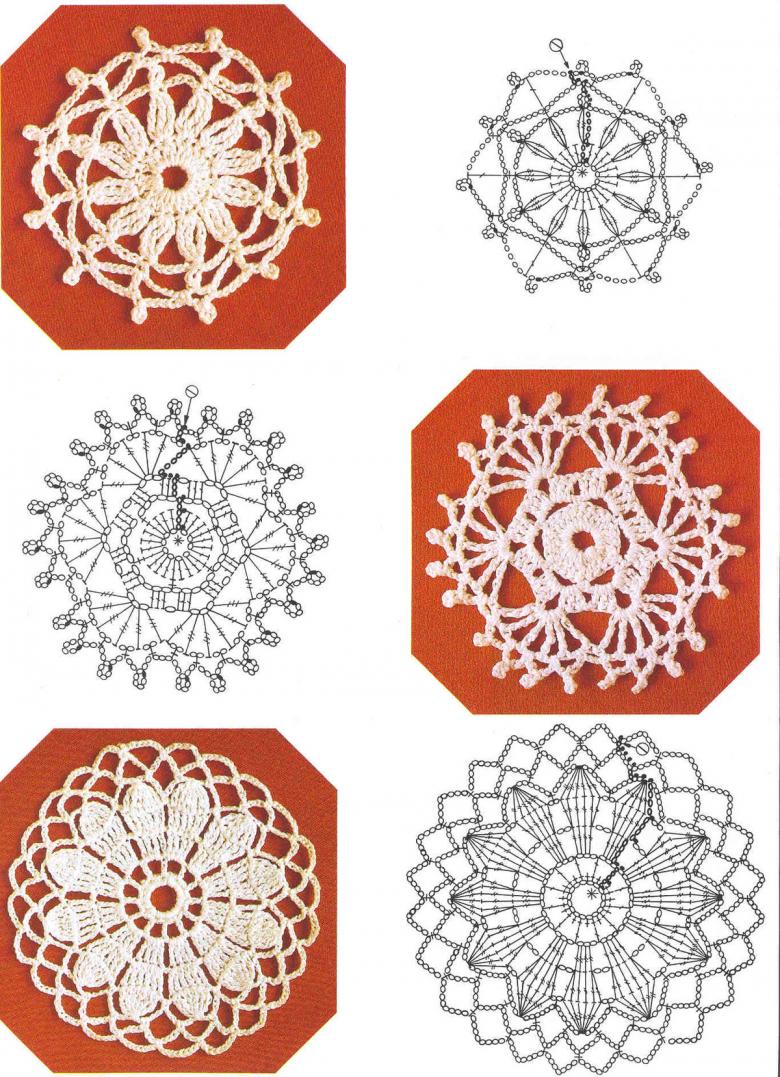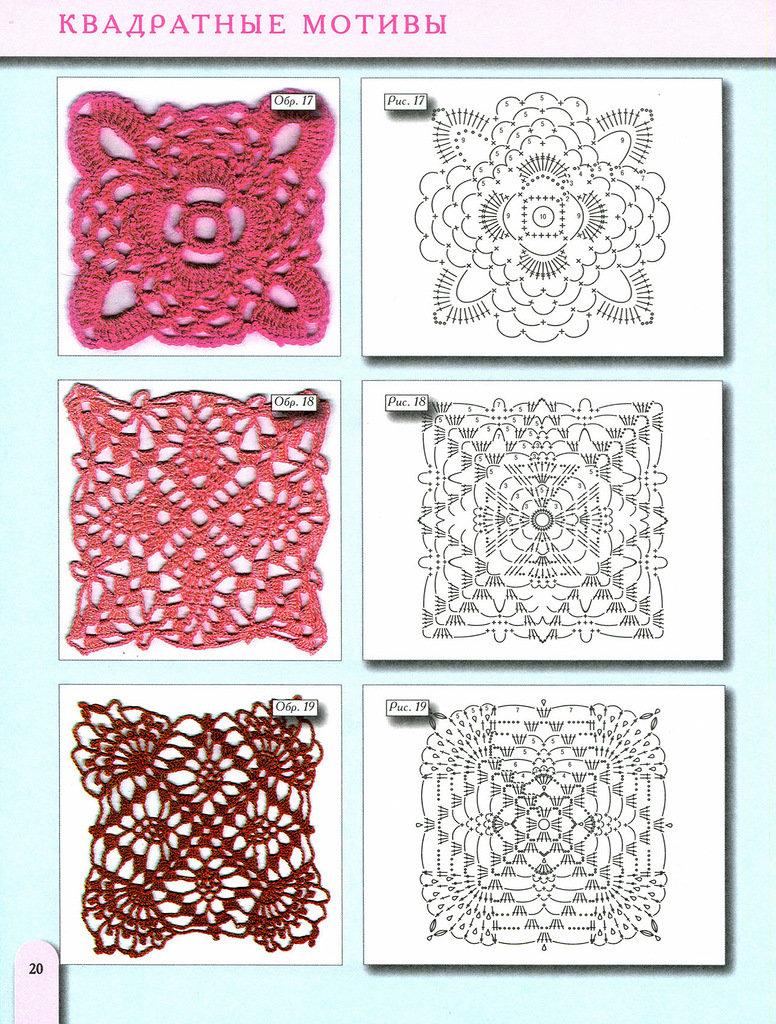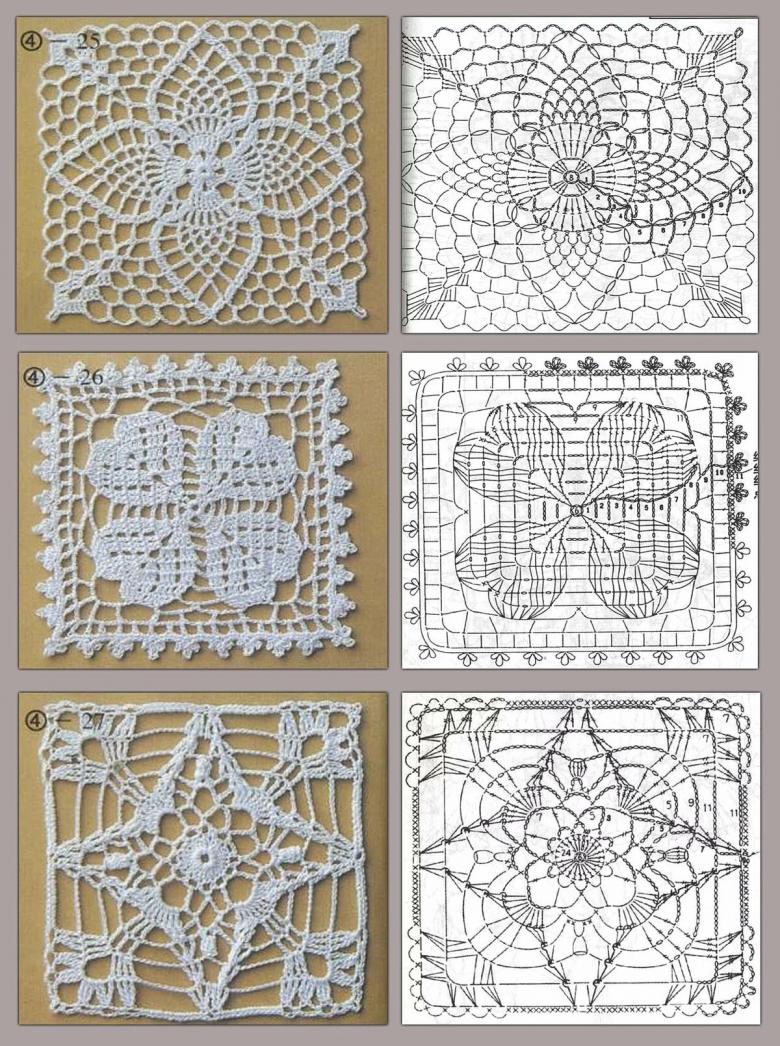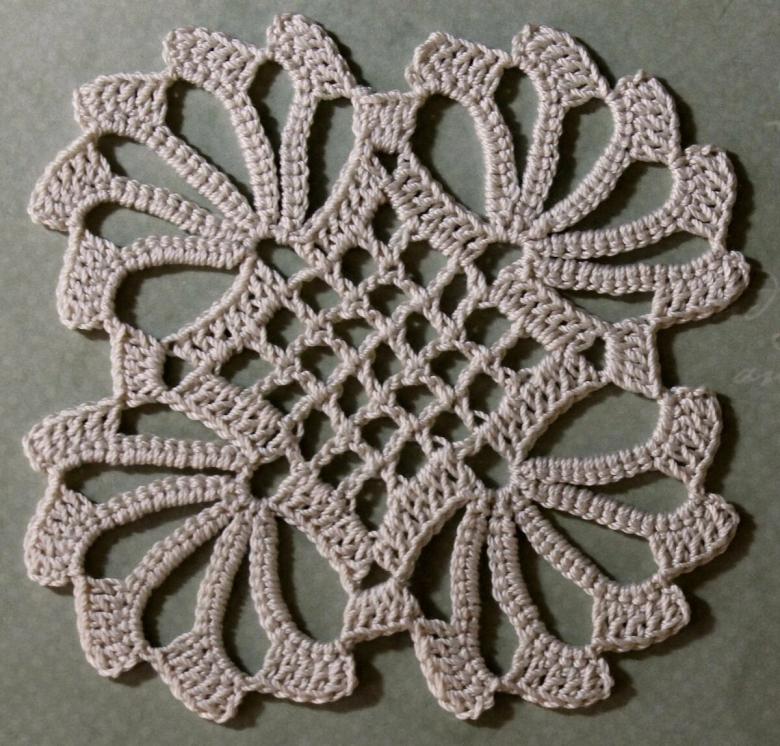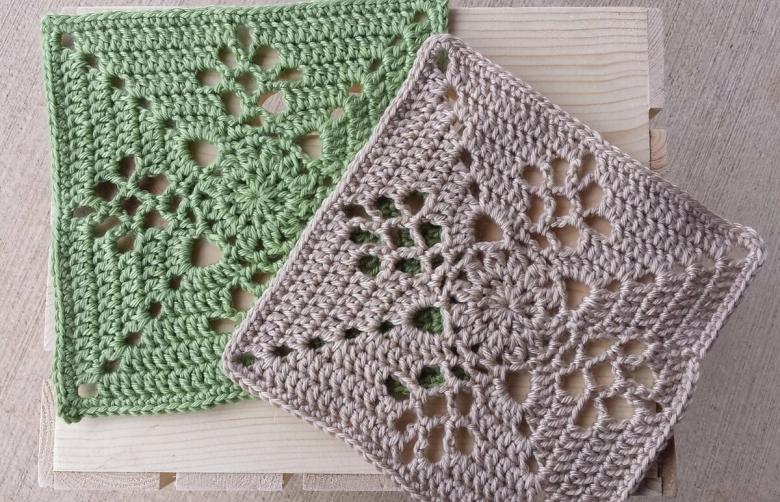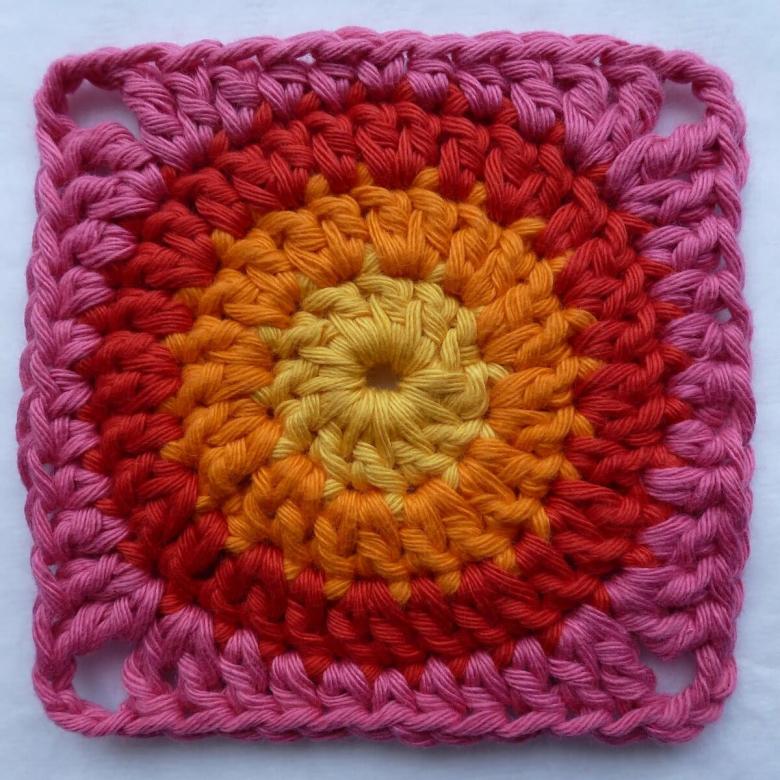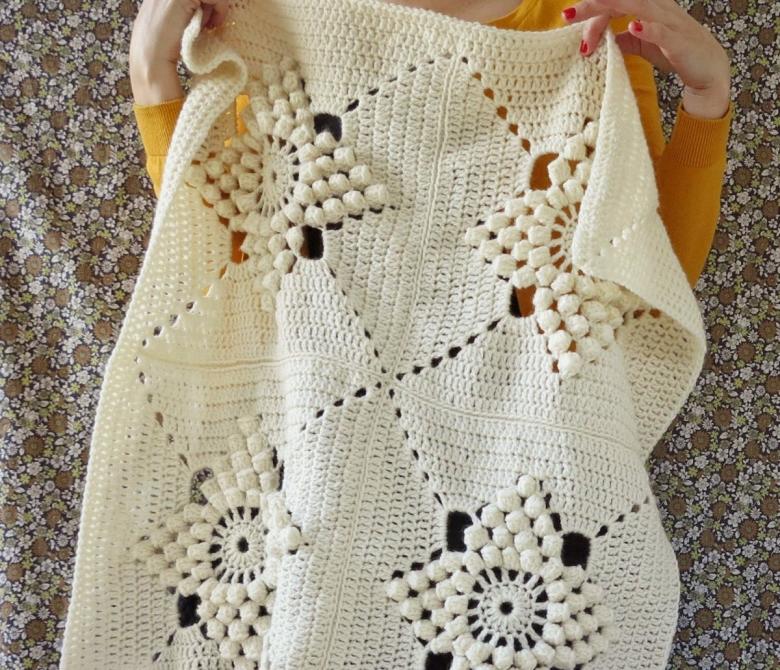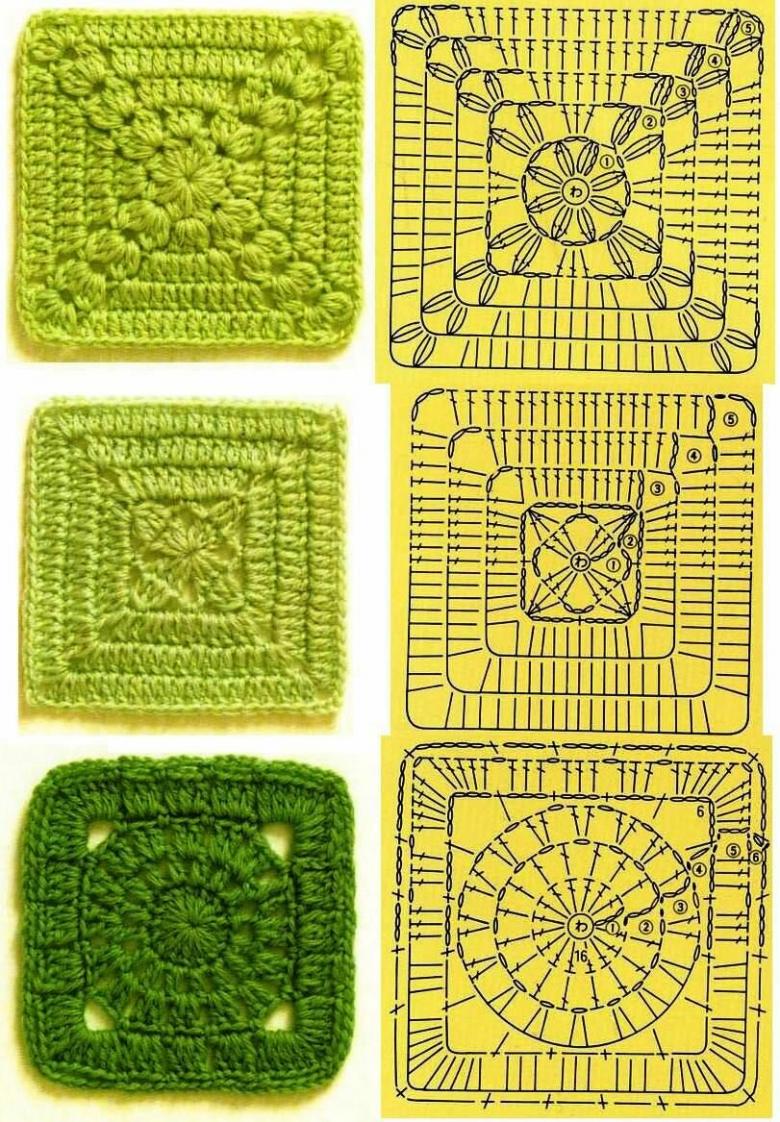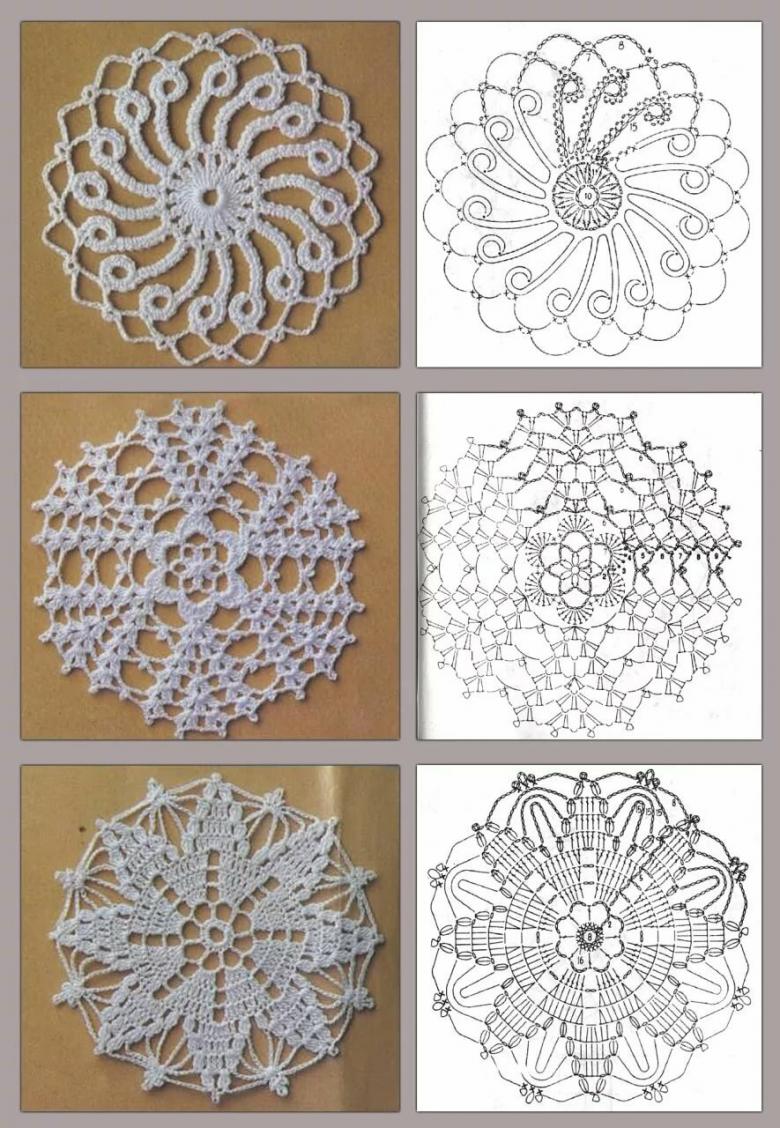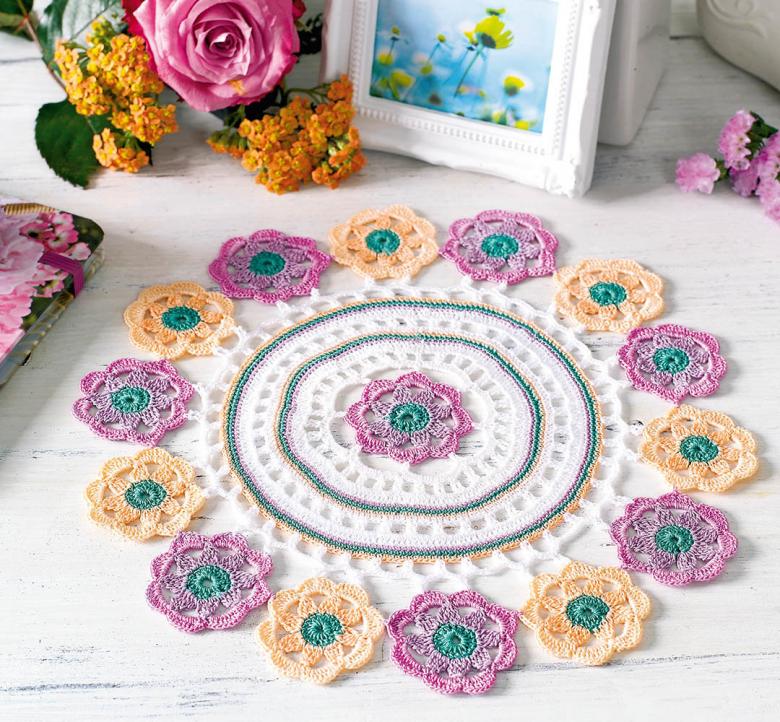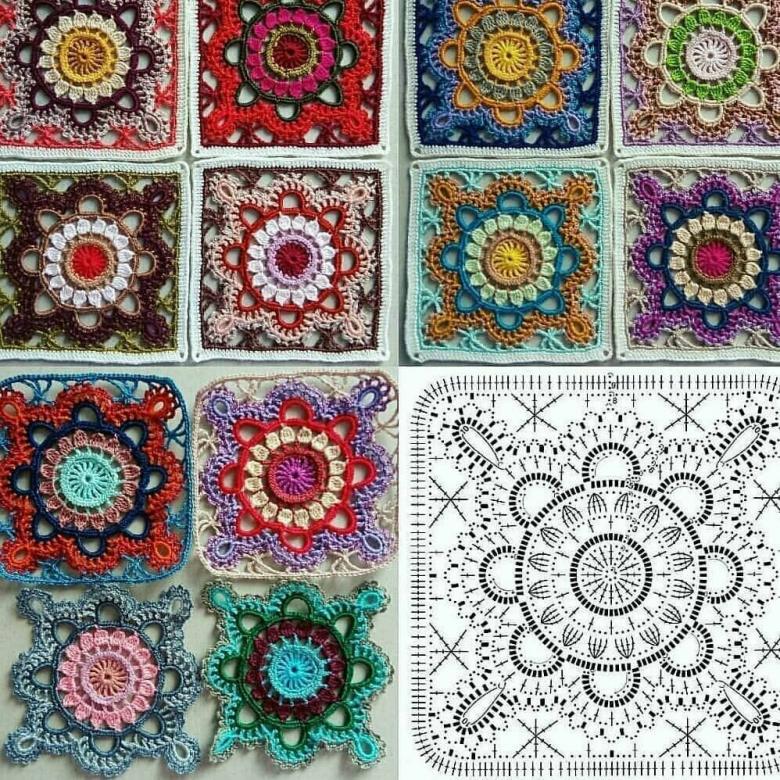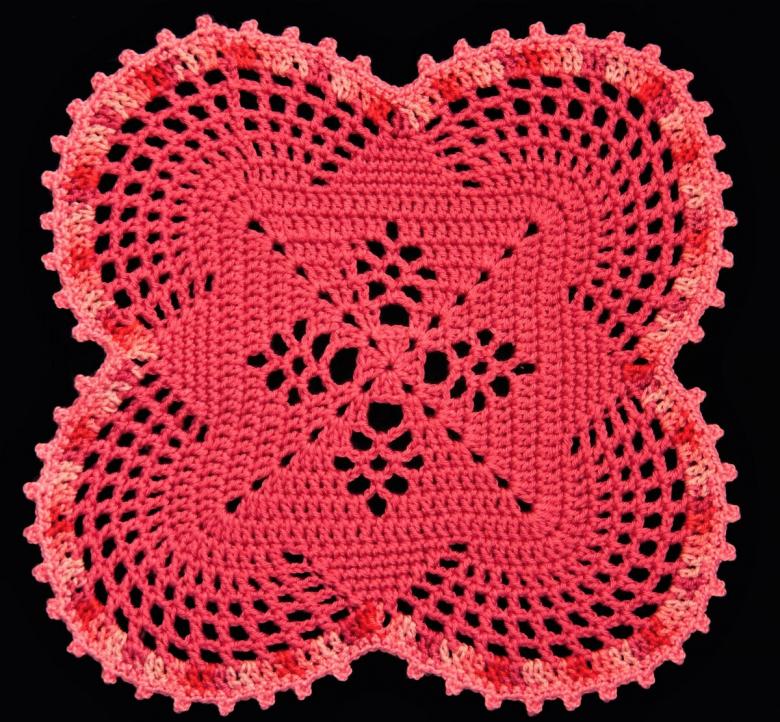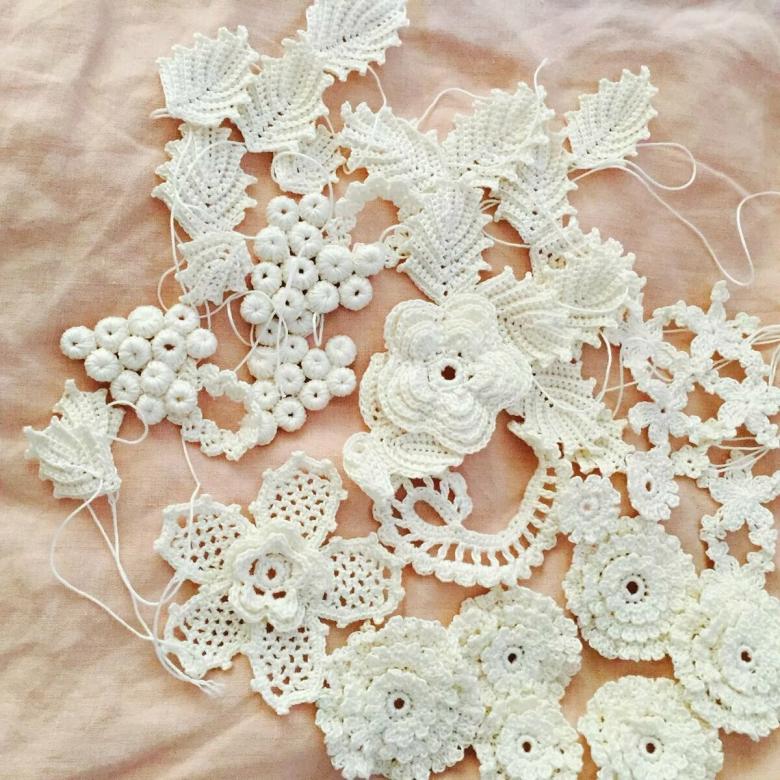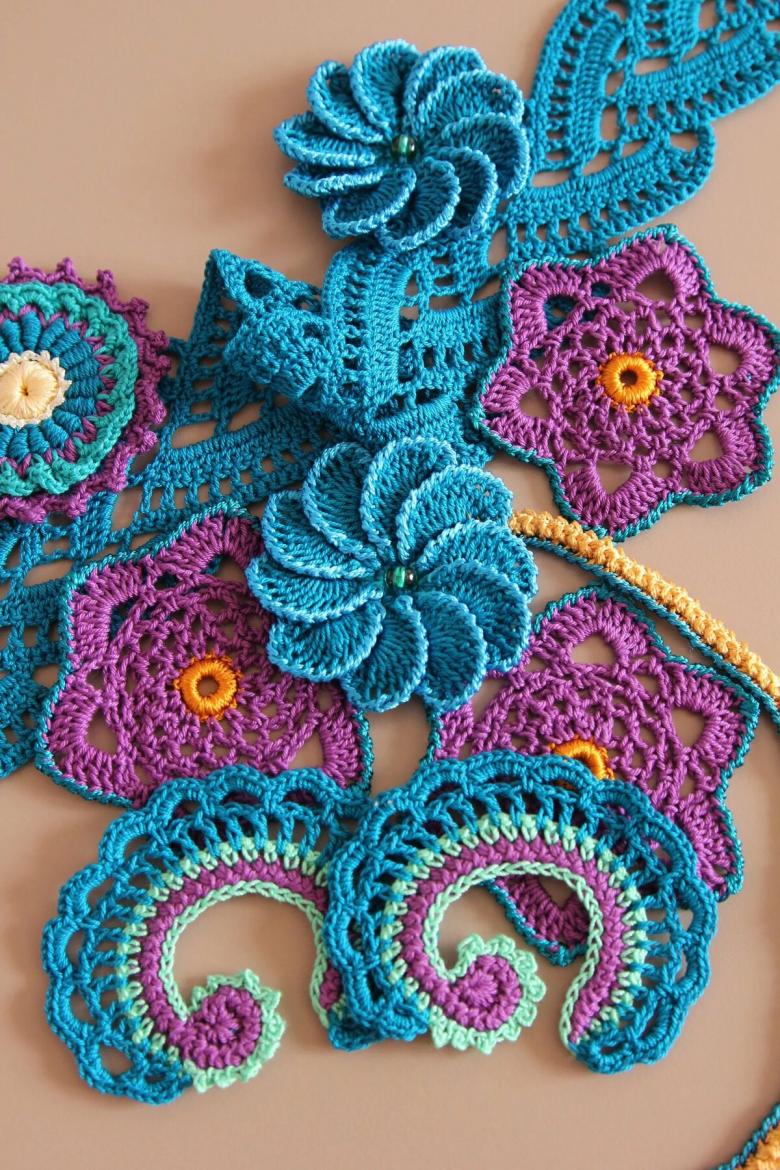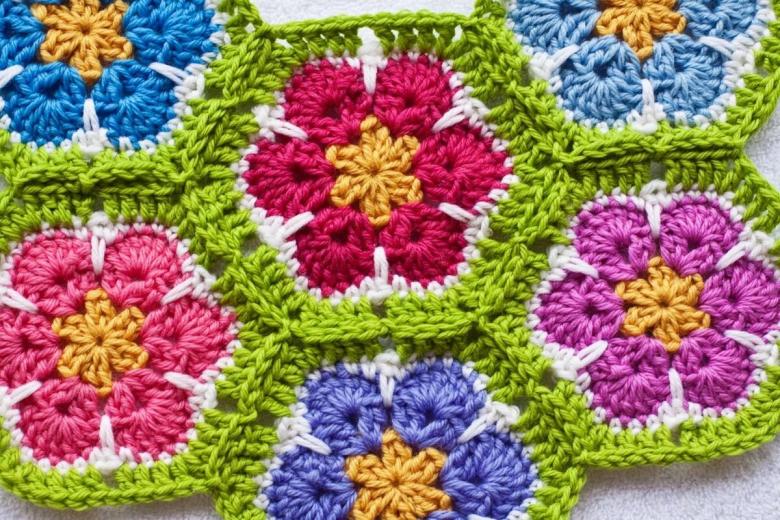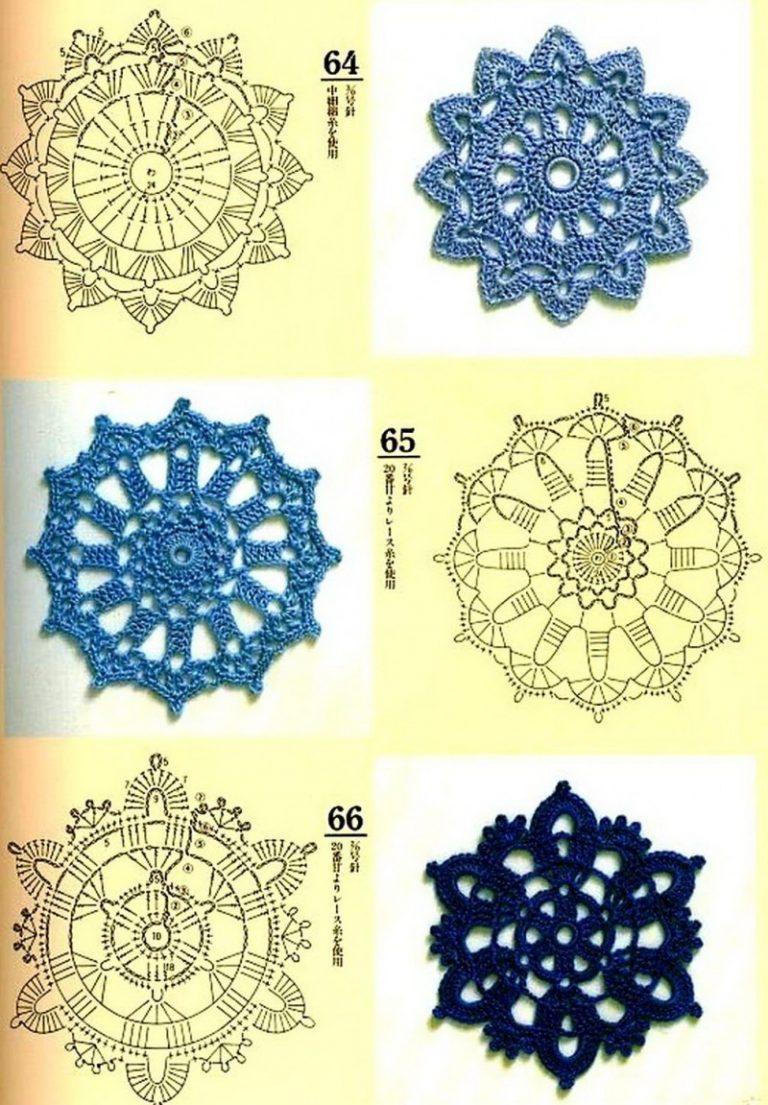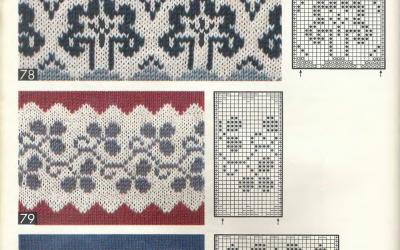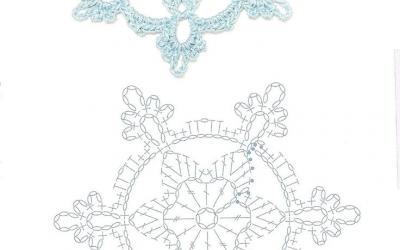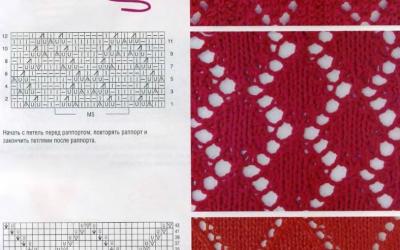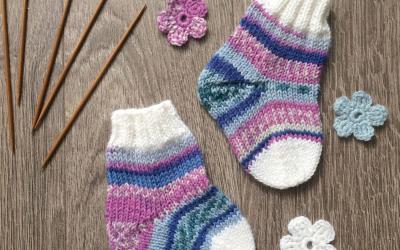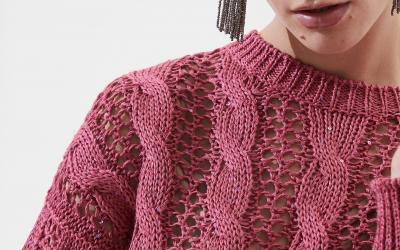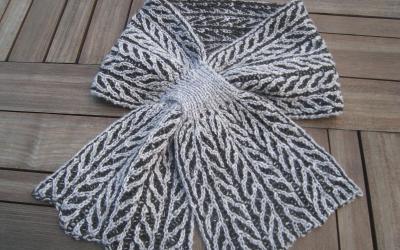Knitting motifs - schemes of square, round, asymmetric and modern motifs
Even at the very beginning of the path to mastering the art of crochet it is worth mastering the technology of knitting motifs. Motif is a small element of varying degrees of complexity. Having learned to knit even the simplest motifs, the needlewoman will already be able to create various items of closet and interior.
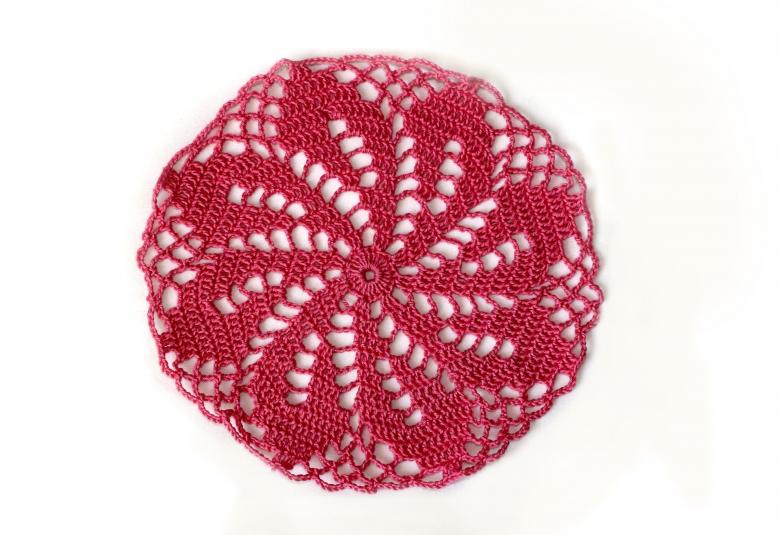
Types of motifs
In the process of improving skills in the piggy bank of the needlewoman will come more and more new patterns. Schemes of various motifs can be divided into several types.
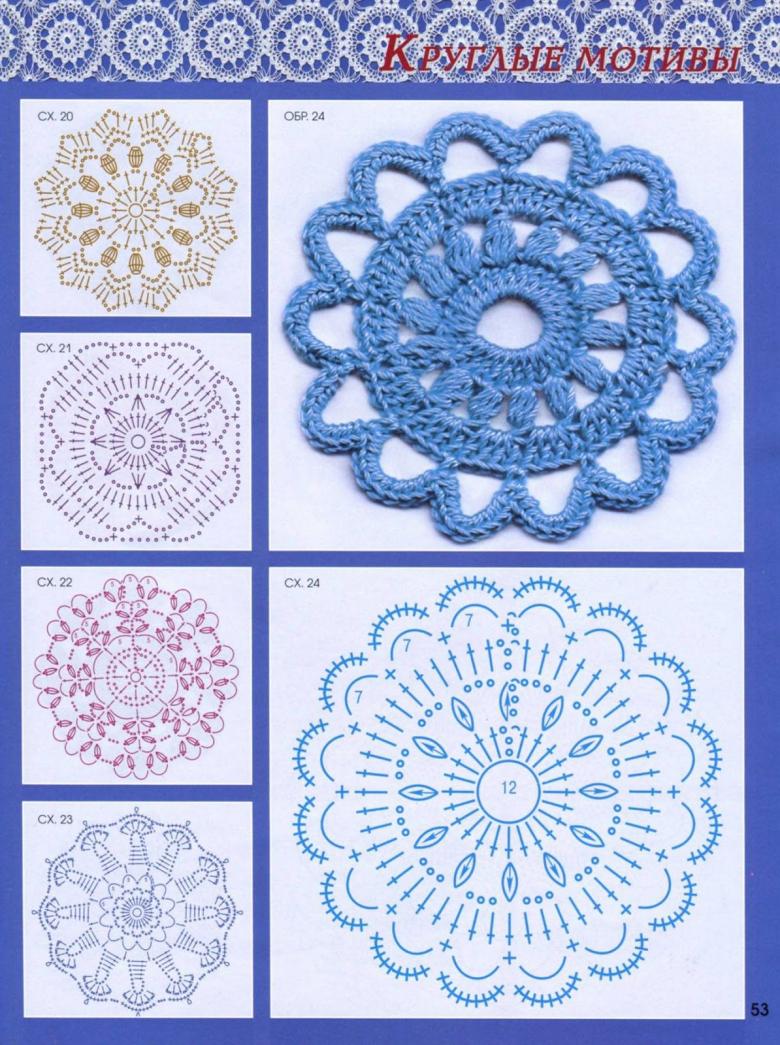
Circular motifs
Knowing how to knit simple circular motifs can make it much easier to learn more complex patterns later on. Experienced skilled knitters often decorate complicated things with circular motifs.
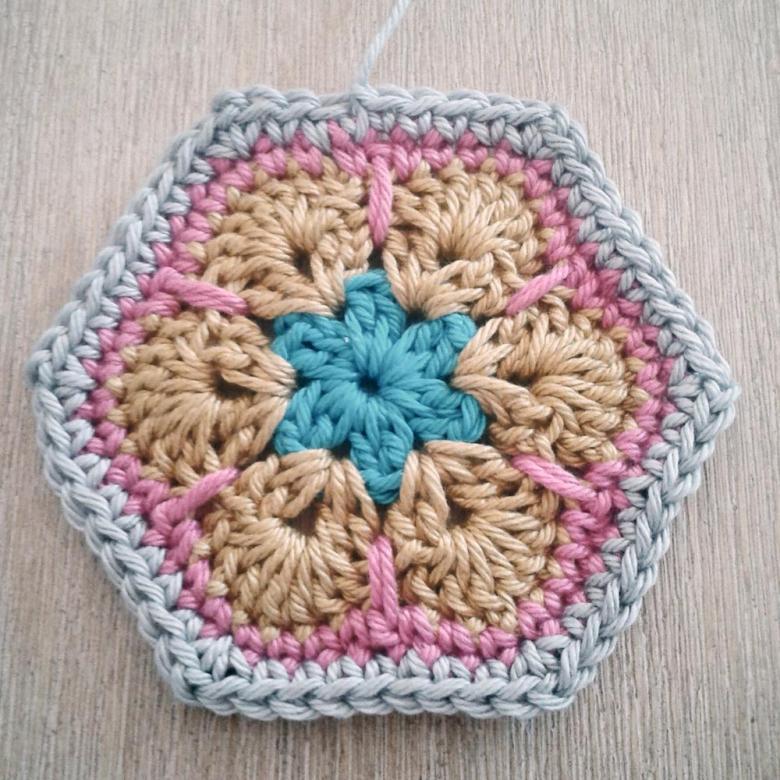
The technology of knitting a circle is quite simple.
- A chain of four air loops is closed in a ring;
- Row 1: from the middle of the ring knit 8 columns without a stitch;
- Row 2: from each loop of the base knit 2 columns without a stitch;
- Row 3: on the first stitch one stitch, on the second two stitches, and so on;
- Row 4: On the first and second stitches one no-quarter stitch, on the third two stitches, that is, in this row the space between the additions is two stitches. In subsequent rows the space between the additions increases to 3, 4 or more columns.
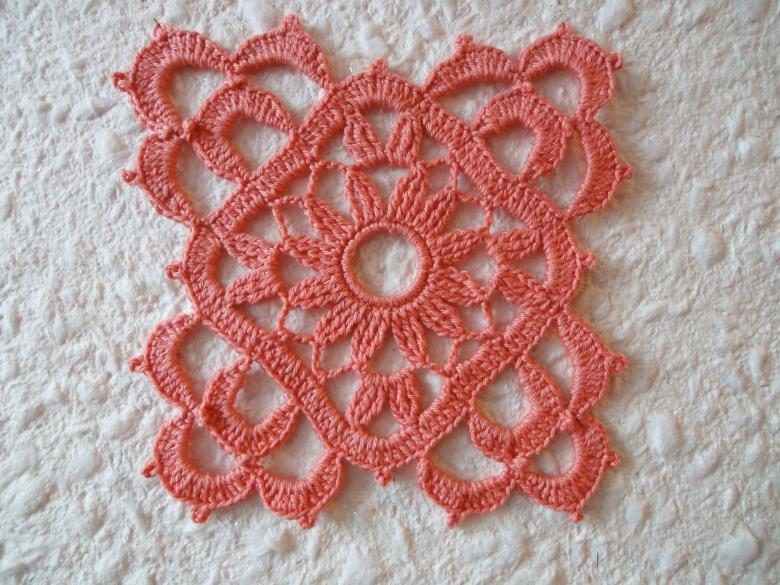
Oval motifs
After a normal circle, you can try knitting an oval. Oval motif can be mentally divided into three parts - two semicircles, between which is a rectangle. Additions in the semicircles are calculated as when knitting a circle, and between them knit a straight fabric.

Triangular motifs
Knitted triangular elements are interestingly combined with any kind of clothing. Triangles can be knitted as a straight fabric with shortened rows, and in a circle. In this case, the additions are made with the help of air loops in the corners and the knitting of additional columns from these arches.
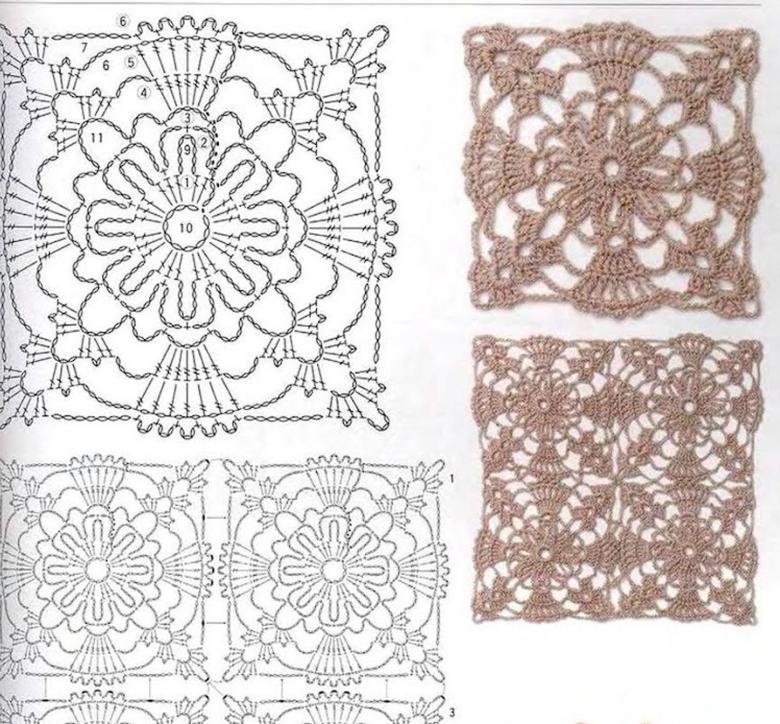
Square motifs
Crochet squares are the favorite motifs of both beginners and experienced needleworkers. You can "assemble" almost any product from square motifs - a rug, a decorative pillowcase, a tablecloth, a vest, a shawl, or homemade boot socks.

Square motifs look beautiful in a simple execution, as well as in a more complex - with volumetric elements and intertwining.
A square, like a triangle, can be made in different ways.
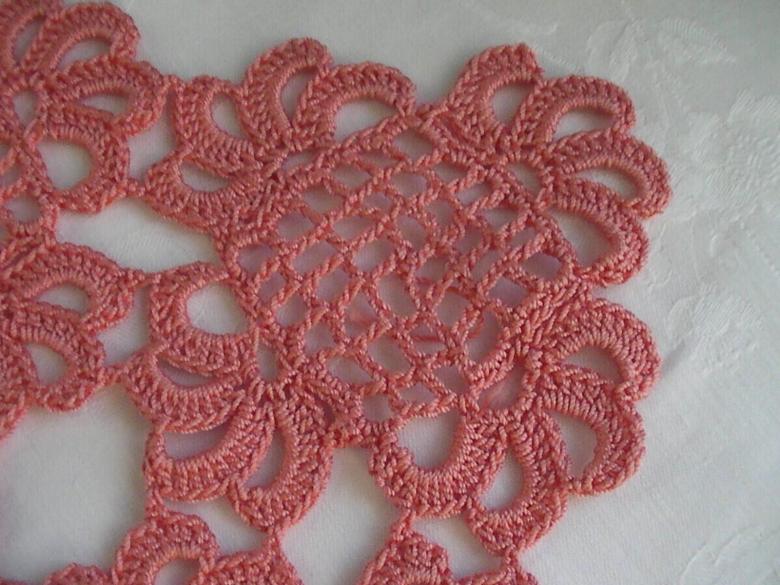
The easiest - knitting in a circle:
- A chain of four air loops is closed in a ring;
- Row 1: From the middle of the ring knit 4 columns without a stitch, and between them knit 4 air loops. The air loops are the beginning of the lines where the additions will be, so it is better to mark them with markers or colored thread;
- Row 2 and beyond: over each airy stitch 2 columns are knitted, and between them an airy stitch (continuation of the line additions). On each loop of the base knit 1 column.
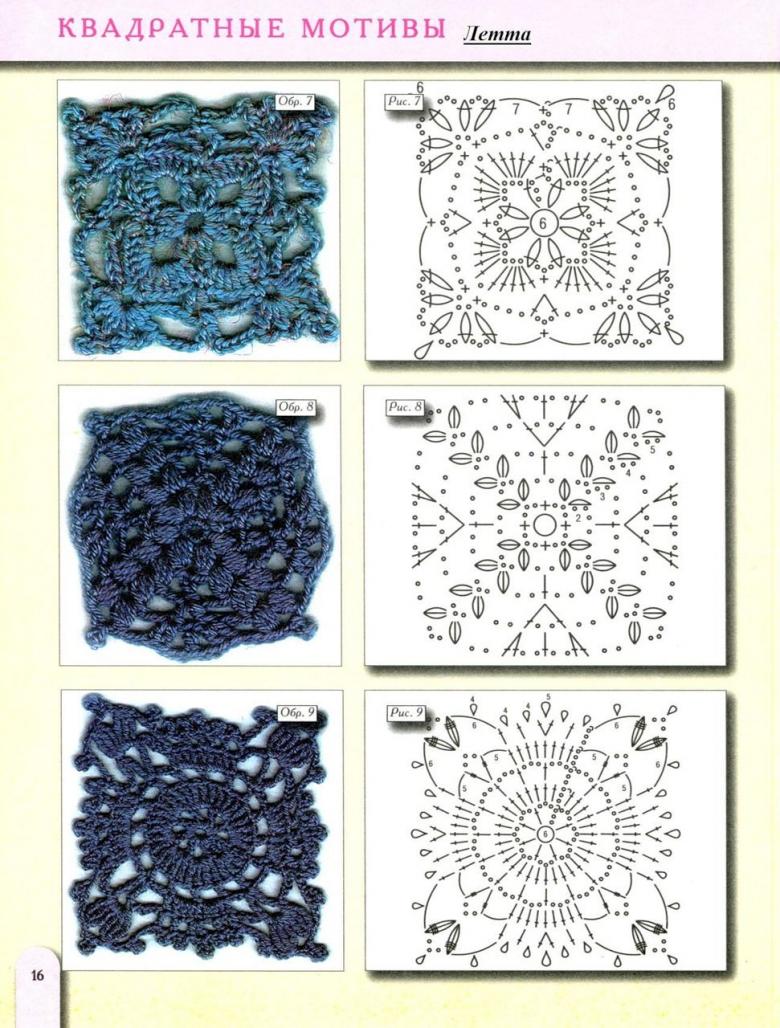
Perhaps the most beloved square motif in the world is the "granny" square. According to one version, it gets its name from its pattern - the alternation of columns with a lap and air loops.
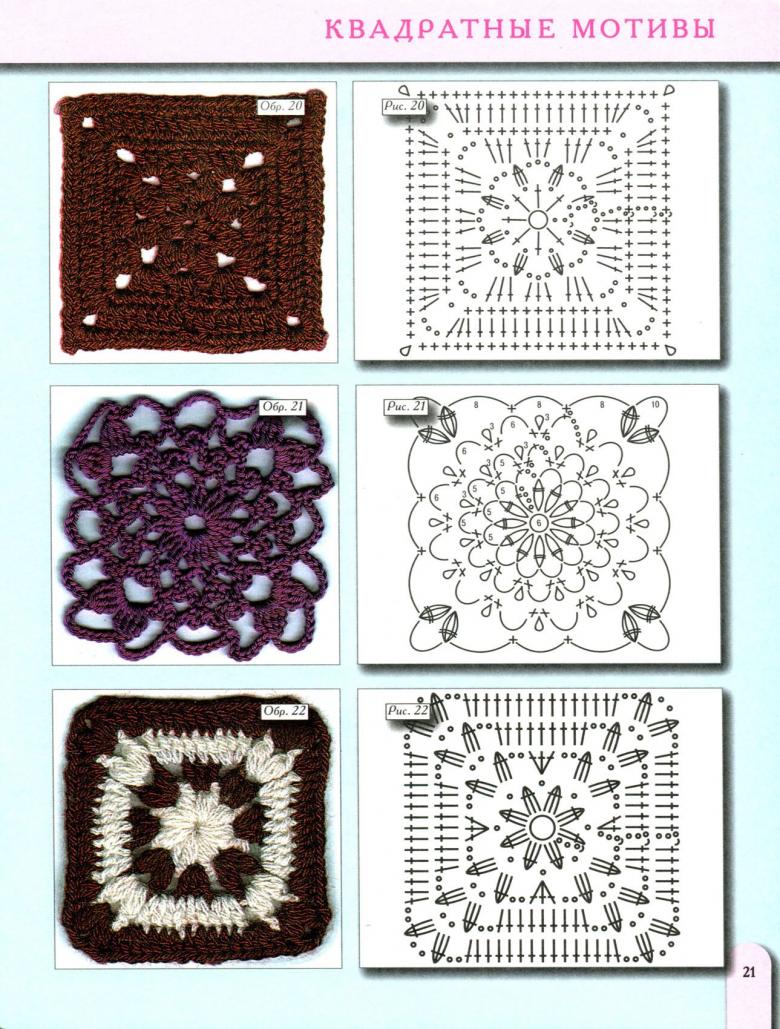
This pattern allows you to make additions "by feel," which many years ago was relevant in the absence of good electric lighting. Granny squares are often knit with a change of color in each row, which allows you to use up leftover yarn accumulated over time.
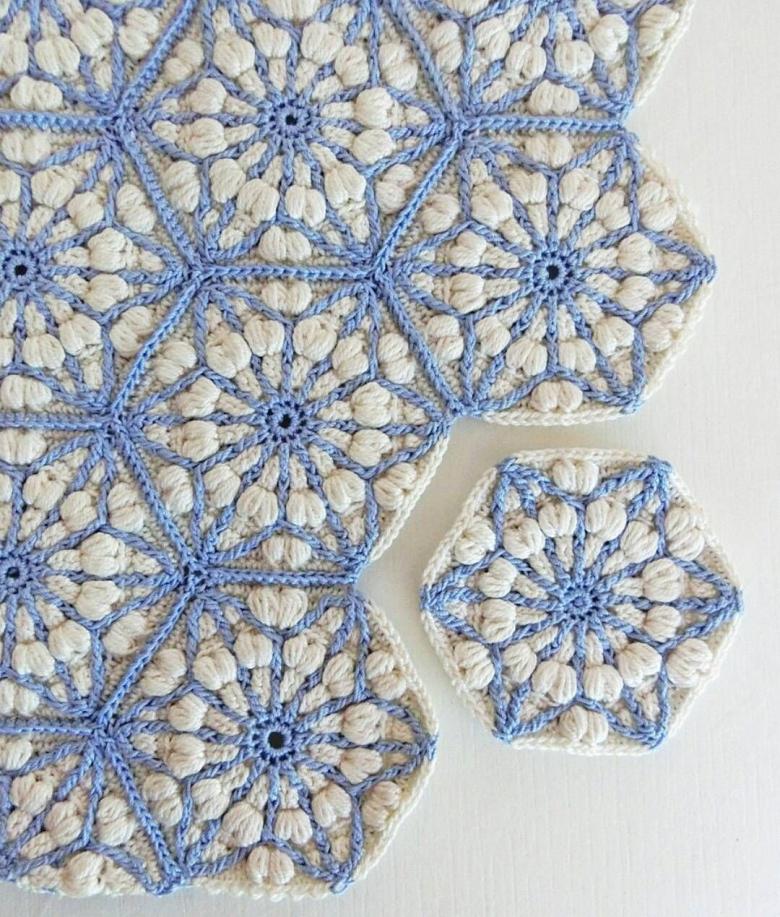
Grandma's square is also knit in a circle:
- In the center is again a ring of air loops;
- Row 1: 3 lifting loops and 3 air loops according to the scheme. Next, from the middle of the ring 3 columns with a stitch, 3 air loops, again 3 columns with a stitch and 3 air loops, and again. The air loops will be the addition lines. The last two columns are knitted and connected to the third loop of the lift. The row is closed;
- Row 2 and beyond: 3 columns, 3 air loops, and 3 columns are knit on the addition lines. On the straight sides above the air loop are knitted 3 columns with a lapel, above the columns - air loop.
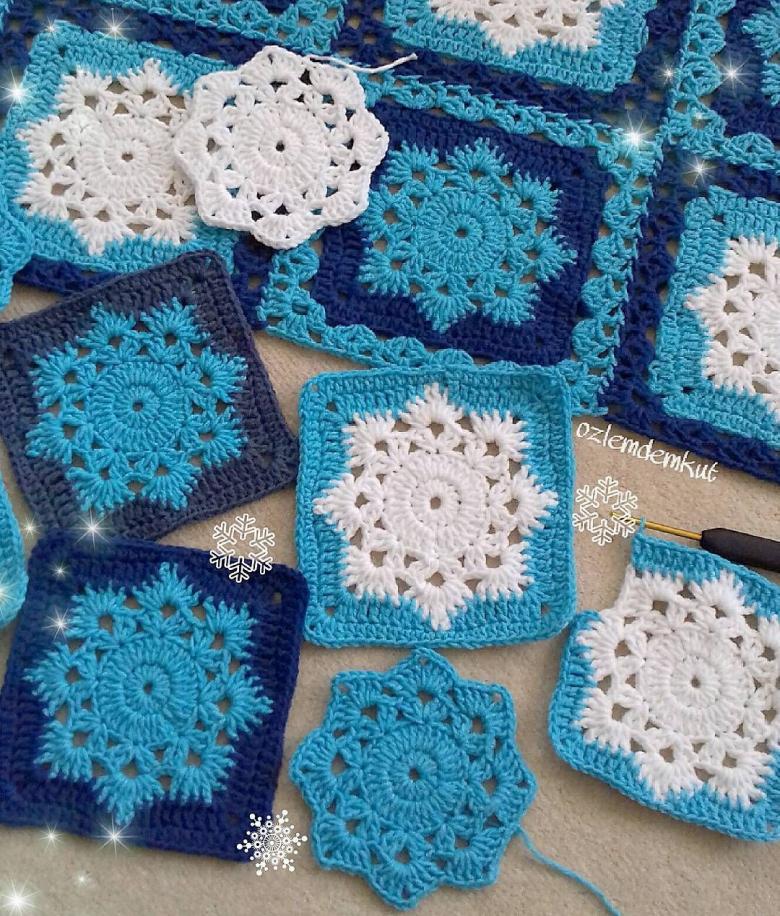
Polygons
The technology of knitting pentaminoes and hexagons is the same as in the knitting of a square in a circle. Work begins with a ring of air loops, the first row outlines the centerlines of the additions - the number of sides of the future polygon.
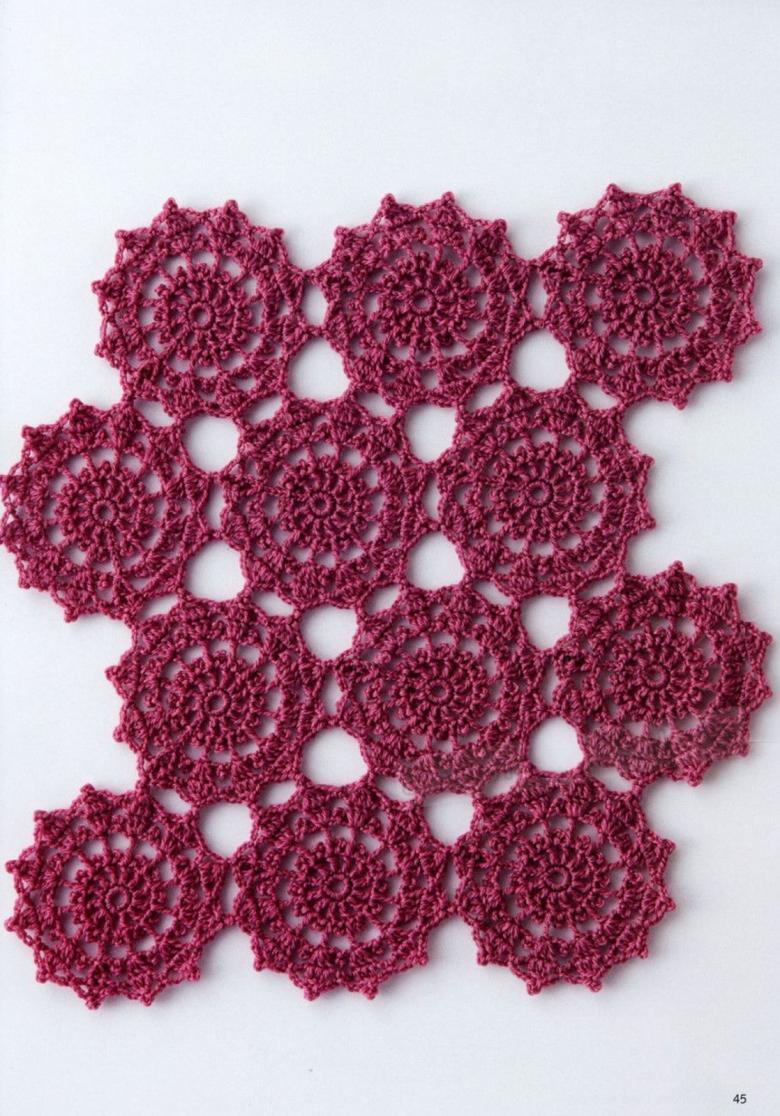
Openwork motifs
There are many ways to knit openwork motifs. Depending on the skill level of the needlewoman can choose a simple or multi-structure convex pattern. Like many others, openwork circular motifs can be used either as a stand-alone piece or combined into a large canvas.
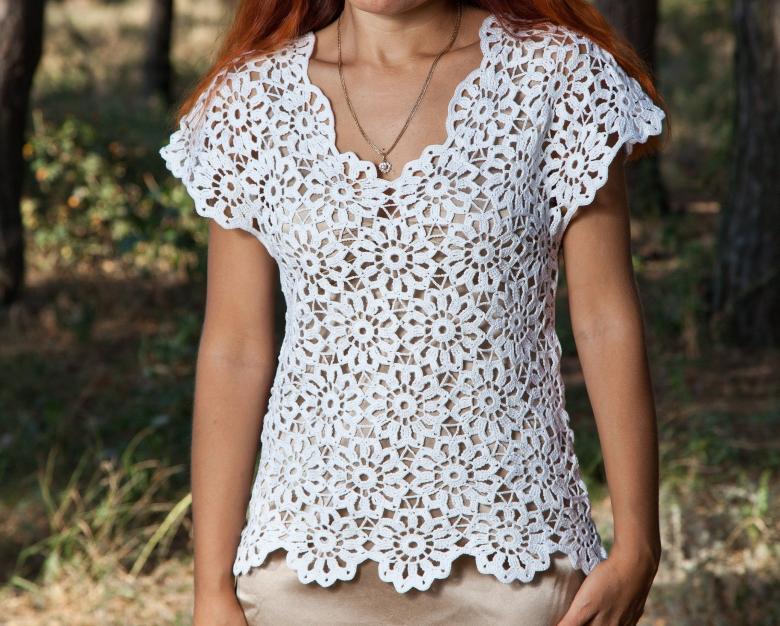
Floral motifs
Flowers go well with any knitted garment. There are many types of floral motifs, and they combine elements of knitting many other motifs. Learning to knit even the simplest flower, you can already make several different products.
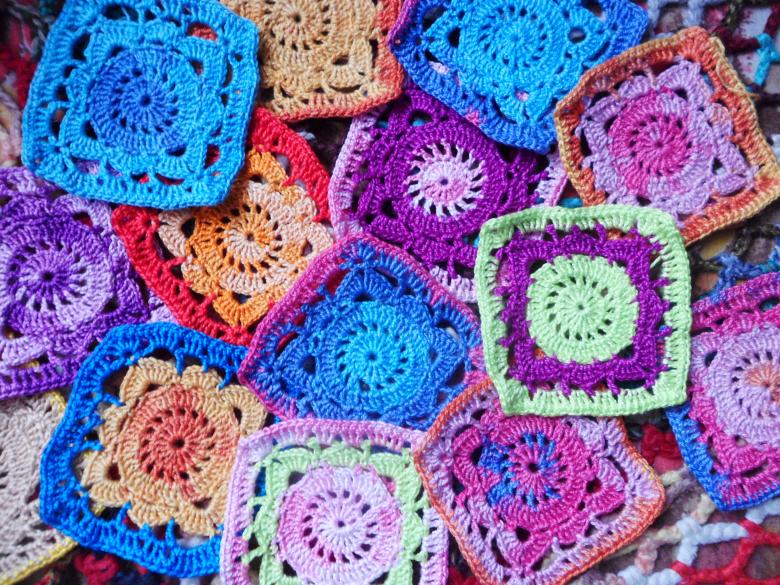
And the openwork pattern with pointed petals, made of white cotton thread and starched, becomes a magical snowflake, flew to the holiday tree.
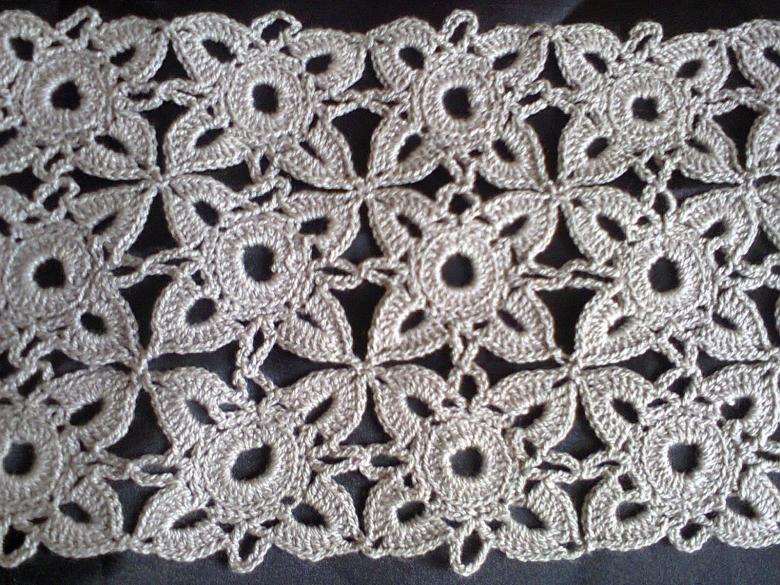
Irish Lace
The spectacular look of Irish lace adorns any knitted garment. But it is also one of the most difficult knitting techniques. It is believed that this type of knitting was originally conceived for a less time-consuming imitation of Venetian lace.
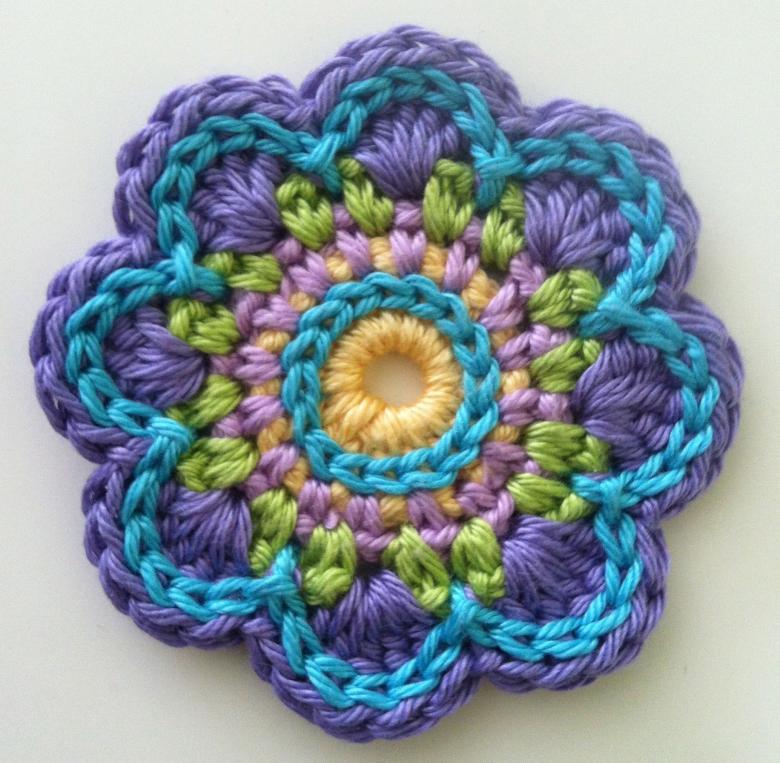
All motifs of Irish lace are inspired by nature - these are leaves, flowers, silhouettes of intertwined branches and grass, and, of course, trefoil. Sometimes Irish lace is also called pixie lace.
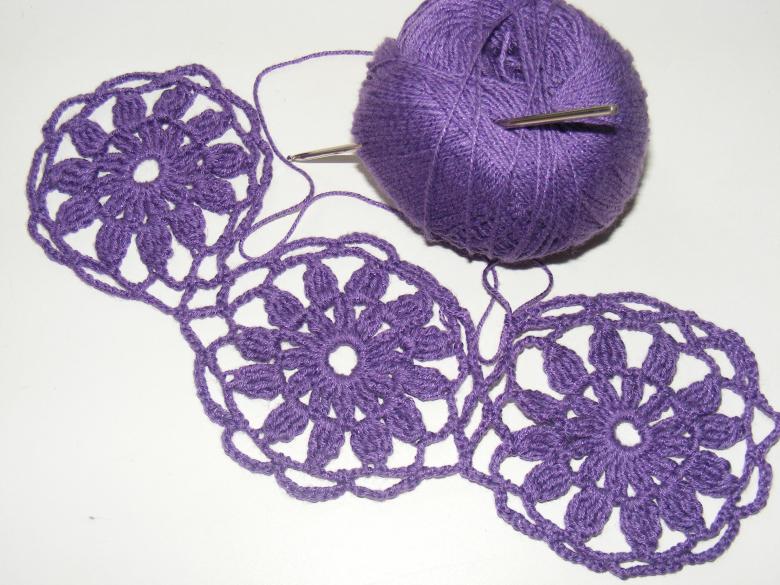
Non-breaking motif knitting
Non-tear-off method of knitting motifs has several advantages:
- There is no need to cut and fasten the thread, hide the ends;
- Already in the process of work it becomes clear how individual motives are combined;
- You can always stop and re-tie motifs that you didn't like or didn't get.
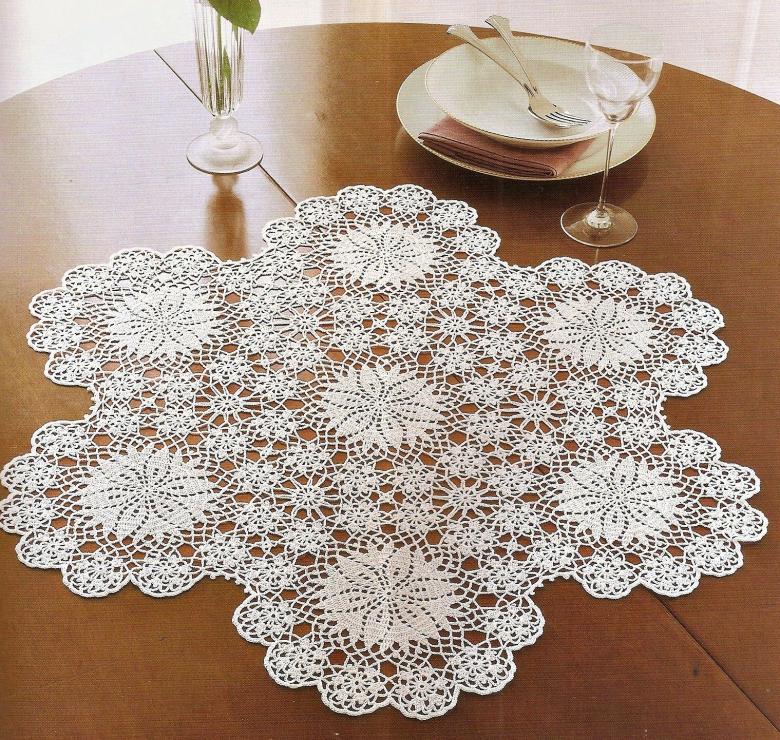
The most common type of non-breaking connection of motifs - to start the next motif from the last row of the previous one. This is often done by knitting from several balls.
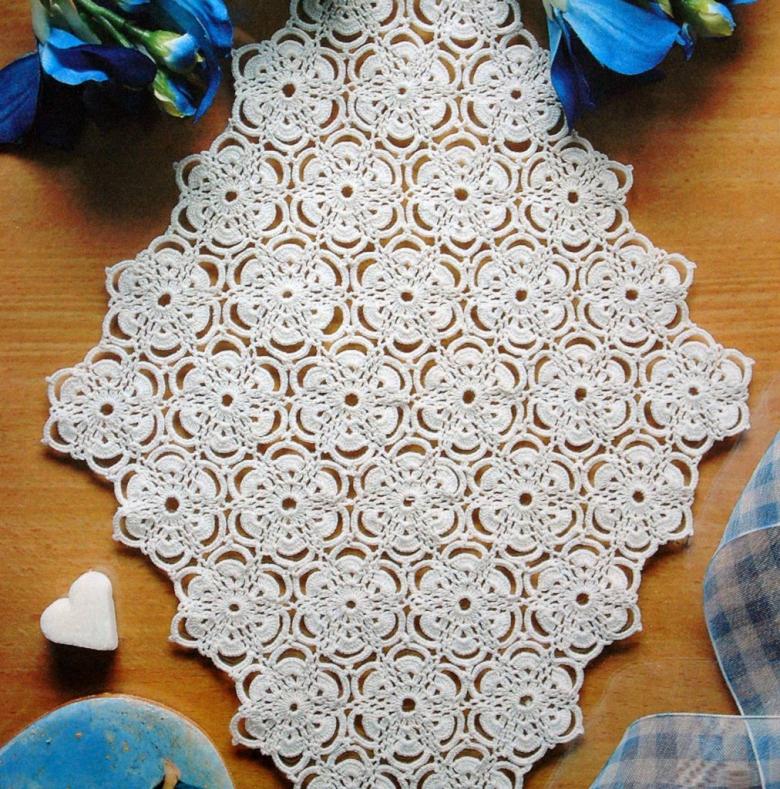
Joining separate motifs
Connecting the individual motifs correctly is as important as knitting them, because the appearance of the finished product will depend on it. Most often, finished motifs are sewn with a needle at the back of the loops to get a flat seam. Also popular way to connect the motifs by crochet.

Every knitter has her own favorite motifs. With the help of motifs you can not only create original and beautiful things, but also add unusual elements to familiar products. The ability to use and harmoniously combine different patterns of motifs is an indicator of the skill of the needlewoman, the very "clothes", which is usually met.

